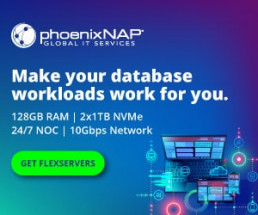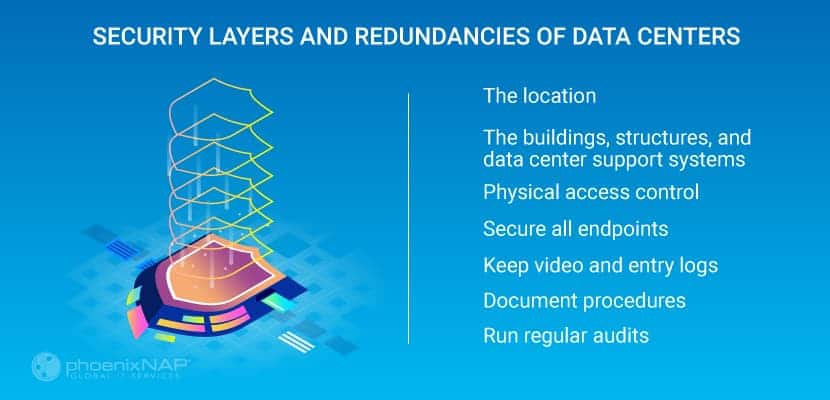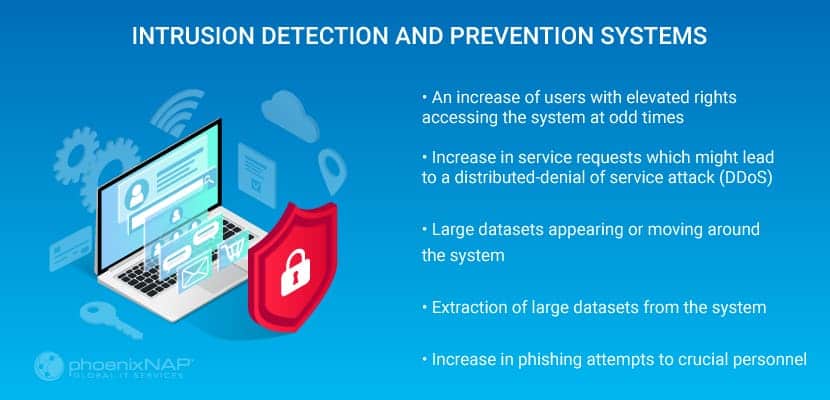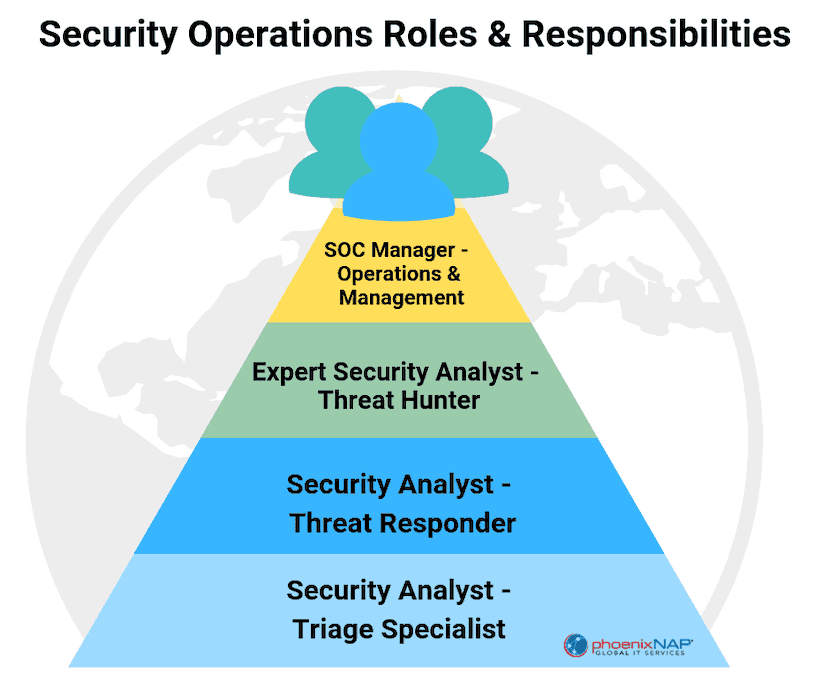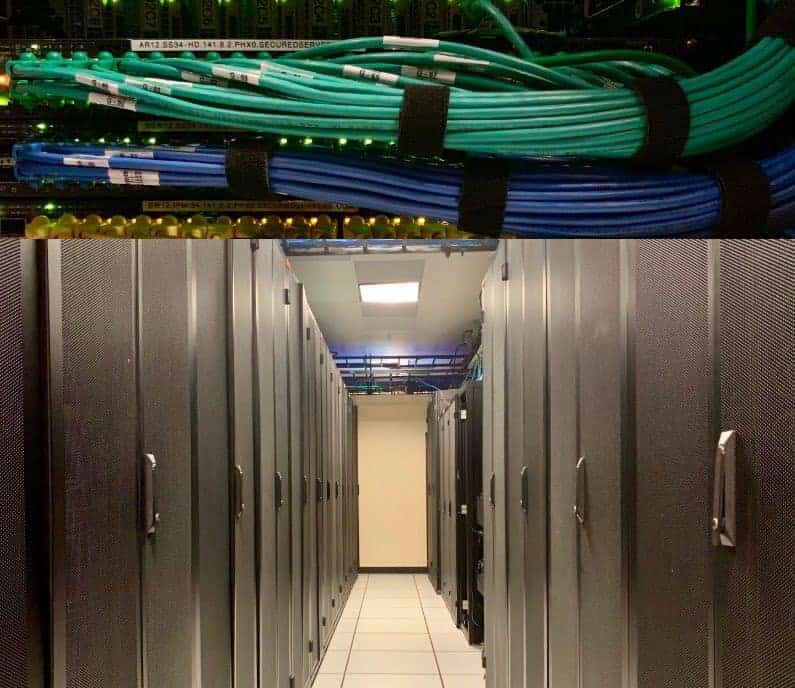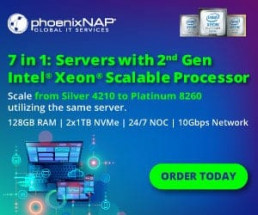Dedicated Server Benefits: 5 Advantages for Your Business
You understand the value of your company’s online presence.
You have your website, but how is it performing? Many business owners do not realize that they share servers with 100’s or even 1000’s of other websites.
Is it time to take your business to the next level and examine the benefits of using dedicated servers.
You may be looking to expand. Your backend database may be straining under the pressure of all those visitors. To stay ahead of competitors, every effort counts.
Your shared server hosting has limitations to your growing business needs. In short, you need a dedicated hosting provider. Whether it’s with shared or dedicated hosting, you get what you pay for.
Let’s address the question that is top of your (or your CFO’s) mind.
How much will a dedicated server cost the business?
The answer to that question depends on the following:
- the computing power you need
- amount of bandwidth you will require
- the quantity of secure data storage and backup
A dedicated server is more expensive than a shared web hosting arrangement, but the benefits are worthy of the increased costs.
Why? A dedicated server supplies more of what you need. It is in a completely different league. Its power helps you level the playing field. You can be more competitive in the growing world of eCommerce.
Five Dedicated Server Benefits
A dedicated server leverages the power and scalability. With a dedicated server, your business realizes a compound return on its monthly investment in the following ways:
1. Exclusive use of dedicated resources
When you have your own dedicated server, you get the entire web server for your exclusive use. This is a significant advantage when comparing shared hosting vs. dedicated hosting.
The server’s disk space, RAM, bandwidth, etc., now belong to you.
- You have exclusive use of all the CPU or RAM and bandwidth. At peak business times, you continue to get peak performance.
- You have root access to the server. You can add your own software and configure settings and access the server logs. Root access is the key advantage of dedicated servers. Again, it goes back to exclusivity.
So, within the limits of propriety, the way you decide to use your dedicated hosting plan is your business.
You can run your applications or implement special server security measures. You can even use a different operating system from your provider. In short, you can drive your website the way you drive your business—in a flexible, scalable, and responsive way.
2. Flexibility managing your growing business
A dedicated server can accommodate your growing business needs. With a dedicated server, you can decide on your own server configuration. As your business grows, you can add more or modify existing services and applications. You remain more flexible when new opportunities arise or unexpected markets materialize.
It is scalability for customizing to your needs. If you need more processing, storage, or backup, the dedicated server is your platform.
Also, today’s consumers have higher expectations. They want the convenience of quick access to your products. A dedicated server serves your customers with fast page loading and better user experience. If you serve them, they will return.
3. Improved reliability and performance
Reliability is one of the benefits of exclusivity. A dedicated server provides peak performance and reliability.
That reliability also means that server crashes are far less likely. Your website has extra resources during periods of high-volume traffic. If your front end includes videos and image displays, you have the bandwidth you need. Second, only to good website design are speed and performance. The power of a dedicated server contributes to the optimum customer experience.
Managed dedicated web hosting is a powerful solution for businesses. It comes with a higher cost than shared hosting. But you get high power, storage, and bandwidth to host your business.
A dedicated server provides a fast foothold on the web without upfront capital expenses. You have exclusive use of the server, and it is yours alone. Don’t overlook technical assistance advantages. You or your IT teams oversee your website.
Despite that vigilance, sometimes you need outside help. Many dedicated hosting solutions come with equally watchful technicians. With managed hosting, someone at the server end is available for troubleshooting around the clock.
4. Security through data separation
Dedicated servers permit access only to your company.
The server infrastructure includes firewalls and security monitoring.
This means greater security against:
- Malware and hacks: The host’s network monitoring, secure firewalls, and strict access control free you to concentrate on your core business.
- Preventing denial of service attacks: Data separation isolates your dedicated server from the hosting company’s services and data belonging to other customers. That separation ensures quick recovery from backend exploits.
You can also implement your own higher levels of security. You can install your applications to run on the server. Those applications can include new layers of security and access control.
This adds a level of protection to your customer and proprietary business data. You safeguard your customer and business data, again, through separation.
5. No capital or upfront expense
Upfront capital expense outlays are no longer the best way to finance technology. Technology advances outpace their supporting platforms in a game of expensive leapfrog. Growing businesses need to reserve capital for other areas.
Hosting providers provide reasonable fees while providing top of the line equipment.
A dedicated hosting provider company can serve many clients. The cost of that service is a fraction of what you would pay to do it in-house. Plus you the bonuses of physical security and technical support.
What to Consider When Evaluating Dedicated Server Providers
Overall value
Everyone has a budget, and it’s essential to choose a provider that fits within that budget. However, price should not be the first or only consideration. Many times, it can end up costing you more in the long run by simply choosing the lowest priced option. Take a close look at what the provider offers in the other six categories we’ll cover in this guide, and then ask yourself if the overall value aligns with the price you’ll pay to run the reliable business you strive for.
Reputation
What are other people and businesses saying about a provider? Is it good, bad, or is there nothing at all? A great way to know if a provider is reliable and worthy of your business is to learn from others’ experiences. Websites like Webhostingtalk.com provide a community where others are talking about hosting and hosting related topics. One way to help decide on a provider is to ask the community for feedback. Of course, you can do some due diligence ahead of time by simply searching the provider’s name in the search function.
Reliability
Businesses today demand to be online and available to their customers 24 hours a day, seven days a week, and 365 days a year. Anything less means you’re probably losing money. Sure, choosing the lowest priced hosting probably seems like a good idea at first, but you have to ask yourself is the few dollars you save per month worth the headache and lost revenue if your website is offline. The answer is generally no.
Support
You only need it, when you need it. Even if you’re administering your own server, having reliable, 24×7 support available when you need it is critical. The last thing you want is to have a hard time reaching someone when you need them most. Look for service providers that offer multiple support channels such as live chat, email, and phone.
Service level agreements
SLA’s are the promises your provider is making to you in exchange for your payment(s). With the competitiveness of the hosting market today, you shouldn’t choose a provider that doesn’t offer important Service Level Agreements such as uptime, support response times, hardware replacement, and deployment times.
Flexibility
Businesses go through several phases of their lifecycle. It’s important to find a provider that can meet each phase’s needs and allow you to quickly scale up or down based on your needs at any given time. Whether you’re getting ready to launch and need to keep your costs low, or are a mature business looking to expand into new areas, a flexible provider that can meet these needs will allow you to focus on your business and not worry about finding someone to solve your infrastructure headaches.
Hardware quality
Business applications demand 24×7 environments and therefore need to run on hardware that can support those demands. It’s important to make sure that the provider you select offers server-grade hardware, not desktop-grade, which is built for only 40 hour work weeks. The last thing you want is for components to start failing, causing your services to be unavailable to your customers.
Advantages of Dedicated Servers, Ready to Make the Move?
Dedicated hosting provides flexibility, scalability, and better management of your own and your customers’ growth. They also offer reliability and peak performance which ensures the best customer experience.
Include the option of on-call, around-the-clock server maintenance, and you have found the hosting solution your business is looking for.
Recent Posts
Comprehensive Guide to Intelligent Platform Management Interface (IPMI)
Intelligent Platform Management Interface (IPMI) is one of the most used acronyms in server management. IPMI became popular due to its acceptance as a standard monitoring interface by hardware vendors and developers.
So what is IPMI?
The short answer is that it is a hardware-based solution used for securing, controlling, and managing servers. The comprehensive answer is what this post provides.
What is IPMI Used For?
IPMI refers to a set of computer interface specifications used for out-of-band management. Out-of-band refers to accessing computer systems without having to be in the same room as the system’s physical assets. IPMI supports remote monitoring and does not need permission from the computer’s operating system.
IPMI runs on separate hardware attached to a motherboard or server. This separate hardware is the Baseboard Management Controller (BMC). The BMC acts like an intelligent middleman. BMC manages the interface between platform hardware and system management software. The BMC receives reports from sensors within a system and acts on these reports. With these reports, IPMI ensures the system functions at its optimal capacity.
IPMI collaborates with standard specification sets such as the Intelligent Platform Management Bus (IPMB) and the Intelligent Chassis Management Bus (ICMB). These specifications work hand-in-hand to handle system monitoring tasks.
Alongside these standard specification sets, IPMI monitors vital parameters that define the working status of a server’s hardware. IPMI monitors power supply, fan speed, server health, security details, and the state of operating systems.
You can compare the services IPMI provides to the automobile on-board diagnostic tool your vehicle technician uses. With an on-board diagnostic tool, a vehicle’s computer system can be monitored even with its engine switched off.
Use the IPMItool utility for managing IPMI devices. For instructions and IPMItool commands, refer to our guide on how to install IPMItool on Ubuntu or CentOS.
Features and Components of Intelligent Platform Management Interface
IPMI is a vendor-neutral standard specification for server monitoring. It comes with the following features which help with server monitoring:
- A Baseboard Management Controller – This is the micro-controller component central to the functions of an IPMI.
- Intelligent Chassis Management Bus – An interface protocol that supports communication across chasses.
- Intelligent Platform Management Bus – A communication protocol that facilitates communication between controllers.
- IPMI Memory – The memory is a repository for an IPMI sensor’s data records and system event logs.
- Authentication Features – This supports the process of authenticating users and establishing sessions.
- Communications Interfaces – These interfaces define how IPMI messages send. IPMI send messages via a direct-out-of-band local-area Networks or a sideband local-area network. IPMI communicate through virtual local-area networks.
Comparing IPMI Versions 1.5 & 2.0
The three major versions of IPMI include the first version released in 1998, v1.0, v1.5, and v2.0. Today, both v1.5 and v2.0 are still in use, and they come with different features that define their capabilities.
Starting with v1.5, its features include:
- Alert policies
- Serial messaging and alerting
- LAN messaging and alerting
- Platform event filtering
- Updated sensors and event types not available in v1. 0
- Extended BMC messaging in channel mode.
The updated version, v2.0, comes with added updates which include:
- Firmware Firewall
- Serial over LAN
- VLAN support
- Encryption support
- Enhanced authentication
- SMBus system interface
Analyzing the Benefits of IPMI
IPMI’s ability to manage many machines in different physical locations is its primary value proposition. The option of monitoring and managing systems independent of a machine’s operating system is one significant benefit other monitoring tools lack. Other important benefits include:
Predictive Monitoring – Unexpected server failures lead to downtime. Downtime stalls an enterprise’s operations and could cost $250,000 per hour. IPMI tracks the status of a server and provides advanced warnings about possible system failures. IPMI monitors predefined thresholds and provides alerts when exceeded. Thus, actionable intelligence IPMI provides help with reducing downtime.
Independent, Intelligent Recovery – When system failures occur, IPMI recovers operations to get them back on track. Unlike other server monitoring tools and software, IPMI is always accessible and facilitates server recoveries. IPMI can help with recovery in situations where the server is off.
Vendor-neutral Universal Support – IPMI does not rely on any proprietary hardware. Most hardware vendors integrate support for IPMI, which eliminates compatibility issues. IPMI delivers its server monitoring capabilities in ecosystems with hardware from different vendors.
Agent-less Management – IPMI does not rely on an agent to manage a server’s operating system. With it, making adjustments to settings such as BIOS without having to log in or seek permission from the server’s OS is possible.
The Risks and Disadvantages of IPMI
Using IPMI comes with its risks and a few disadvantages. These disadvantages center on security and usability. User experiences have shown the weaknesses include:
Cybersecurity Challenges – IPMI communication protocols sometimes leave loopholes that can be exploited by cyber-attacks, and successful breaches are expensive as statistics show. The IPMI installation and configuration procedures used can also leave a dedicated server vulnerable and open to exploitation. These security challenges led to the addition of encryption and firmware firewall features in IPMI version 2.0.
Configuration Challenges – The task of configuring IPMI may be challenging in situations where older network settings are skewed. In cases like this, clearing network configuration through a system’s BIOS is capable of solving the configuration challenges encountered.
Updating Challenges – The installation of update patches may sometimes lead to network failure. Switching ports on the motherboard may cause malfunctions to occur. In these situations, rebooting the system is capable of solving the issue that caused the network to fail.
Server Monitoring & Management Made Easy
Intelligent Platform Management brings ease and versatility to the task of server monitoring and management. By 2022, experts expect the IPMI market to hit the $3 billion mark. PheonixNAP bare metal servers come with IPMI, and it gives you access to the IPMI of every server you use. Get started by signing up today.
Recent Posts
CentOS vs Ubuntu: Choose the Best OS for Your Web Server
Don’t know whether to use CentOS or Ubuntu for your server? Let’s compare both and decide which one you should use on your server/VPS. In highlighting the two principal Linux distributions’ strengths and weaknesses for running a web server, the choice should become clear.
Linux is an open-source operating system currently powering most of the Internet. There are hundreds of different versions of Linux. For web servers, the two most popular versions are Ubuntu and CentOS. Both are open-source and free community-supported operating systems. You’ll be happy to know these distributions have a ton of community support and, therefore, regularly available updates.
Unlike Windows, Linux’s open-source license and encourages users to experiment with the code. This flexibility has created loyal online communities dedicated to building and improving the core Linux operating system.
Quick Overview of Ubuntu and CentOS
Ubuntu
Ubuntu is a Linux distribution based on Debian Linux. The word Ubuntu comes from the Nguni Bantu language, and it generally means “I am what I am because of who we all are.” It represents Ubuntu’s guiding philosophy of helping people come together in the community. Canonical, the Ubuntu developers, sought to make a Linux OS that was easy to use and had excellent community support.
Ubuntu boasts a robust application repository. It is updated frequently and is designed to be intuitive and easy to use. It is also highly customizable, from the graphical interface down to web server packages and internet security.
CentOS
CentOS is a Linux distribution based on Red Hat Enterprise Linux (RHEL). The name CentOS is an acronym for Community Enterprise Operating System. Red Hat Linux has been a stable and reliable distribution since the early days of Linux. It’s been mostly implemented in high-end corporate IT applications. CentOS continues the tradition started by Red Hat, providing an extremely stable and thoroughly-tested operating system.
Like Ubuntu, CentOS is highly customizable and stable. Due to its early dominance, many conventions are built around the CentOS architecture. Cutting-edge corporate security measures were implemented in RHEL, that quickly adapt to CentOS’s architecture.
Comparing the Features of CentOS and Ubuntu Servers
One key feature for CentOS and Ubuntu is that they are both free. You can download a copy for no charge and install it on your own cheap dedicated server.
Each version can be distributed or downloaded to a USB drive, which you can boot into without making permanent changes to your operating system. A bootable drive allows you to take the system for a test run before you install it.
Basic architecture
CentOS is based on the Red Hat Enterprise Linux architecture, while Ubuntu is based on Debian. This is important when looking at software package management systems. Both versions use a package manager to resolve dependencies, perform installations, and track updates.
Ubuntu uses the apt package manager and installs software from .deb packages. CentOS uses the yum package manager and installs .rpm packages. They both work about the same, but .deb packages cannot be installed on CentOS – and vice-versa.
The difference is in the availability of packages for both systems. Some packages will not be available as efficiently on Ubuntu as they are on CentOS. When working with your developers, find out their preference as they usually tend to stick to just one package type (.deb or .rpm)
Another detail is the structure of individual software packages. When installing Apache, one of the leading web server packages, the service works a little differently in Ubuntu than in CentOS. The Apache service in Ubuntu is labeled apache2, while the same service in CentOS is labeled httpd.
Software
If you’re strictly going by the number of packages, Ubuntu has a definitive edge. The Ubuntu repository lists tens of thousands of individual software packages available for installation. CentOS only lists a few thousand. If you go by the number of packages, Ubuntu would clearly win.
The other side of this argument is that many graphical server tools like cPanel are written solely for Red-Hat-based systems. While there are similar tools in Ubuntu, some of the most widely-used tools in the industry are only available in CentOS.
Stability, security, and updates
Ubuntu is updated frequently. A new version is released every six months. Ubuntu offers LTS (Long-Term Support) versions every two years, which are supported for five years. These different releases allow users to choose whether they want the “latest and greatest” or the “tried-and-true.” Because of the frequent updates, Ubuntu often includes newer software into newer releases. That can be fun for playing with new options and technology, but it can also create conflicts with existing software and configurations.
CentOS is updated infrequently in part because the developer team for CentOS is smaller. It’s also due to the extensive testing on each component before release. CentOS versions are supported for ten years from the date of release and include security and compatibility updates. However, the slow release cycle means a lack of access to third-party software updates. You may need to manually install third-party software or updates if they haven’t made it into the repository. CentOS is reliable and stable. As the core operating system, it is relatively small and lightweight compared to its Windows counterpart. This helps improve speed and lowers the size that the operating system takes up on the hard disk.
Both CentOS and Ubuntu are stable and secure, with patches released regularly.
Support and troubleshooting
If something goes wrong, you’ll want to have a support path. Ubuntu has paid support options, like many enterprise IT companies. One additional advantage, though, is that there are many expert users in the Ubuntu forums. It’s usually easy to find a solution to common errors or problems.
With a new release coming out every six months, it’s not feasible to offer full support for every version. Regular releases are supported for nine months from the release date. Regular users will probably upgrade to the newest versions as they are released.
Ubuntu also releases LTS or Long-Term Support versions. These are supported for a full five years from the installation date. Releases have ongoing patches and updates, so you can keep an LTS release installed (without needing to upgrade) for five years.
Third-party providers often manage centos support. It provides excellent documentation, plus forums and developer blogs that can help you resolve an error. In part, CentOS relies on its community of Red Hat users to know and manage problems.
The CentOS Project is open-source and designed to be freely available. If you need paid support, it’s recommended that you consider paying for Red Hat Enterprise licensing and support. Where CentOS shines is in its dedication to helping its customers. A CentOS operating system is supported for ten years from the date of release.
New operating system releases are published every two years. This frequency can lower the total cost of ownership since you can stretch a single operating system cycle for a full decade. Above, ‘support’ refers both to the ability to get help from developers and the developers’ commitment to patching and updating software.
Ease of use
Ubuntu has gone to great lengths to make its system user-friendly. An Ubuntu server is more focused on usability. The graphical interface is intuitive and easy to manage, with a handy search function. Running utilities from the command-line is straightforward. Most commands will suggest the proper usage, and the sudo command is easy to use to resolve “Access denied” errors.
Where CentOS has some help and community support, Ubuntu has a solid support knowledge base. This support includes both how-to guides and tutorials, as well as an active community forum.
Ubuntu uses the apt-get package manager, which uses a different syntax from yum. But functions are about the same. Many of the applications that CentOS server use, such as cPanel, have similar alternatives available for Ubuntu. Finally, Ubuntu Linux offers a more seamless software installation process. You can still tinker under the hood, but the most commonly-used software and operating system features are included and updated automatically.
Ubuntu’s regular updates can be a liability. They can conflict with your existing software configuration. It’s not always a good thing to use the latest technology. Sometimes it’s better to let someone else work out the bugs before you install an update.
CentOS is typically for more advanced users. One flaw with CentOS is a steep learning curve. There are fewer how-to guides and community forums available if you run into a problem.
There seems to be less hand-holding in CentOS – most guides presume that you know the basics, like sudo or basic command-line features. These are skills you can learn working with other Red Hat professionals or by taking certifications.
With CentOS built around the Red Hat architecture, many old-school Linux users find it more familiar and comfortable. CentOS is also used widely across the Internet at the server level, so using it can improve cross-compatibility. Many CentOS server utilities, such as cPanel, are built to work only in Red Hat Linux.
CentOS or Ubuntu for Development
CentOS takes longer for the developers to test and approve updates. That’s why CentOS releases updates much slower than other Linux variants. If you have a strong business need for stability or your environment is not very tolerant of change, this can be more helpful than a faster release schedule.
Due to the lower and slower support for CentOS, some software updates are not applied automatically. A newer version of a software application may be released but may not make it into the official repository. If this happens, it can leave you responsible for manually checking and installing security updates. Less-experienced users might find this process too challenging.
Ubuntu, as an “out-of-the-box” operating system, includes many different features. There are three different versions of Ubuntu:
- Desktop version, which is for basic end-users;
- Server, web hosting over the Internet or in the cloud
- Core, which is for other devices (like cars, smart TV’s, etc.)
A basic installation of Ubuntu Server should include most of the applications you need to configure your server to host files over a network. It also adds extra software. Such as an open-source office productivity software, as well as the latest kernel and operating system features.
Ubuntu’s focus on features and usability relies on the release of new versions every six months. This is very helpful if you prefer to use the latest software available. These updates can also become a liability if you have custom software that doesn’t play nicely with newer updates.
Cloud deployment
Ubuntu offers excellent support for container virtualizations. It provides support for cloud deployment and expands its influence in the market compared to CentOS. Since June 2019, “Canonical announced full enterprise support for Kubernetes 1.15 kubeadm deployments, its Charmed Kubernetes, and MicroK8s; the popular single-node deployment of Kubernetes. “
CentOS is not being left behind and competes by offering three private cloud choices. It also provides a public cloud platform through AWS. CentOS has a high standard of documentation and provides its users with a mature platform so that CentOS users can apply its features further.
Gaming Servers
Unbuntu has a pack that custom-designed for gamers called the Ubuntu GamePack. It’s based on Ubuntu. It does not come with games preinstalled. It instead comes preinstalled with the PlayOnLinux, Wine, Lutric, and Steam client. It’s a like software intersection where games on Windows, Linux, Console, and Steam are played.
It’s a hybrid version of the Ubuntu OS since it also supports Adobe Flash and Oracle Java. It allows for the seamless play of online gaming. Ubuntu gamepack is optimized for over six thousand Windows and Linux games, which guaranteed launch and function in the Ubuntu GamePack. If you’ve more familiar with Ubuntu, then choose the desktop version for gaming.
CentOS is not as popular for gaming as Ubuntu. If you’ve used CentOS for your server, then you can try the Fedora-based distribution for gaming. It’s called Fedora Games Spin, and it’s the preferred Linux distribution for gaming servers for CentOS/RedHat/Fedora Linux users.
Most of the best gaming distros are Debian/Ubuntu-based, but if you’re committed to CentOS, you can run it in live mode from a USB/DVD media without installing it. It’s accompanied by an Xfce desktop environment and has over two thousand Linux games. It’s a single platform that allows you to play all Fedora games.
Comparison Table of CentOS and Ubuntu Linux Versions |
||
| Features | CentOS | Ubuntu |
| Security | Strong | Good (needs further configuration) |
| Support Considerations | Solid documentation. Active but limited user community. | High-level documentation and large support community |
| Update Cycle | Infrequent | Often |
| System Core | Based on Redhat | Based on Debian |
| Cloud Interface | CloudStack, OpenStack, OpenNebula | OpenStack |
| Virtualization | Native KVM Support | Xen, KVM |
| Stability | High | Solid |
| Package Management | YUM | aptitude, apt-get |
| Platform Focal Point | Targets server market, choice of larger corporations | Targets desktop users |
| Speed Considerations | Excellent (depending on hardware) | Excellent (depending on hardware) |
| File Structure | Identical file/folder structure, system services differ by location | Identical file/folder structure, system services differ by location |
| Ease of Use | Difficult/Expert Level | Moderate/User-friendly |
| Manageability | Difficult/Expert Level | Moderate/User-friendly |
| Default applications | Updates as required | Regularly updated |
| Hosting Market Share | 497,233 sites – 17.5% of Linux users | 772,127 sites – 38.2% of Linux users |
Bottom Line on Choosing a Linux Distribution for Your Server
Both CentOS and Ubuntu are free to use. Your decision should reflect the needs of your web server and usage.
If you’re more of a beginner in being a server admin, you might lean towards Ubuntu. If you’re a seasoned pro, CentOS might be more appealing. If you like implementing new software and technology as it’s released, Ubuntu might hold the edge for you. If you hate dealing with updates breaking your server, CentOS might be a better fit. Either way, you shouldn’t worry about one being better than the other.
Both are approximately equal in security, stability, and functionality – Let us help you choose the system that will serve your business best.
What is Managed Hosting? Top Benefits For Every Business
The cost to buy and maintain server hardware for securely storing corporate data can be high. Find out what managed hosting is and how it can work for your business.
Maintaining servers is not only expensive but time and space exhaustive. Web Hosting Solutions exist to scale costs as your business grows. As the underlying infrastructure that supports IT expands, you’ll need to plan for that and find a solution that caters to increasing demands.
How? Read on, and discover how your organization can benefit from working with a managed services provider.
Managed Server Hosting Defined
Managed IT hosting is a service model where customers rent managed hardware from an MSP or ‘managed service provider.’ This service is also called managed dedicated hosting or single-tenant hosting. The MSP leases servers, storage, and a network dedicated environment to just one client. An option for those who want to migrate their infrastructure to the cloud.
There are no shared environments, such as networking or local storage. Clients that opt for managed server hosting receive dedicated monitoring services and operational management, which means the MSP handles all the administration, management, and support of the infrastructure. It’s all located in a data center which is owned and run by the provider, instead of being located with the client. This feature is especially crucial for a company that has to guarantee information security to its clients.
The main advantage of using managed services is that it allows businesses the freedom to not worry about their server maintenance. As technology continues to develop, companies are finding that by outsourcing day-to-day infrastructure and hardware vendor management, they gain value for money since they do not have to manage it in-house.
The MSP guarantees support to the client for the underlying infrastructure and maintains it. Additionally, it provides a convenient web-interface allowing the client to access their information and data, without fear of data loss or jeopardizing security.
Why Work With a Managed Hosting Provider
Any business that wants to secure and store their data safely, can benefit from managed hosting. Managed services are a good solution to cutting costs and raising efficiency for companies that need:
Network interruptions and server malfunctions cost companies in terms of real-time productivity. Whenever a hardware or performance issues occur you may be at risk of downtime. As you lose time, you inevitably lose money. Especially if you do a portion of your business online.
A survey by CA Technologies revealed just how much impact downtime can have on annual revenues. One of the key findings reported that each year North American businesses are collectively losing $26.5 billion due to IT downtime and recovery alone.
Researchers explained that most of the financial damage could have been avoided with better recovery strategies and data protection.
What are the Benefits of a Managed Host?
Backup and Disaster Recovery
The number one benefit of hiring an MSP is getting uninterrupted service. They work while you rest. Any problems that may arise are handled on the backend, far away from you and your customer base and rarely become customer-facing issues. Redundant servers, network protection, automated backup solutions, and other server configurations all work together to remove the stress from running your business.
Ability To Scale
Managed hosting also you to scale and plan more effectively. You spend less money for more expertise. Instead of employing a team of technicians, you ‘rent’ experienced and skilled experts from the data center, who are assigned according to your requirements. Additionally, you have the benefit of predicting yearly costs for hardware maintenance, according to the configuration chosen.
Increased Security
Managed web hosting services also protects you against cyber attacks by backing up your service states, encrypting your information, and quarantining your data flow. Today’s hackers use automation, AI, computer threading, and many other technologies. To counter this in-house, you would have to spend tens of thousands. The managed hosting service allows you to pay a fraction of this for exponentially more protection.
Redundancy and security increase as you move up service levels. At the highest levels, security on a managed hosting provider is virtually impenetrable.
Lower Operating Costs
One of the biggest benefits of moving to managed hosting is simply that you will be able to significantly reduce the costs of maintaining hardware in-house. Not only will you get to use the infrastructure of the MSP, but also access the expertise of their engineers.
They provide server configuration, storage, and networking requirements. They ensure the maintenance of complex tools, the operating system, and applications that are run on top of the infrastructure. They provide technical support, patching, hardware replacement, security, disaster recovery, firewalls all at a fee that greatly undercuts the costs of having to do it alone. The MSP provisions everything, allowing you to allot budget to other areas of your business.
Hosted vs Managed Services
The difference between owned versus leased or licensed hardware and software assets and hosting services is quantifiable.
Each business must do its own assessment of what will work best. Managed service providers encourage their clients to weigh both the pros and the cons. They will also help create personalized plans that suit specific business needs. This plan would reflect the risks, demands and financial plans an enterprise needs to consider before migrating to the cloud.
Typically there are three (3) conventional managed plans to choose from:
- The Basic package
- The Advanced package
- The Custom package
The basic package provides server and network management capabilities, assistance and support when needed, and periodical performance statistics.
The advanced package would offer fully managed servers, proactive troubleshooting, availability monitoring, and faster meaningful response.
The custom package is recommended for best for business solutions. It includes all advanced features with additional custom work time.
It is essential to note that each plan is implemented differently, tailored to the client individually.
Future of Managed Server Hosting
In 2010, the market size for cloud computing and hosting was $24.63 billion. In 2018, it was $117.96 billion. By 2020, some experts predict it will eclipse the $340 billion mark. The market has been growing exponentially for a decade now. It doesn’t look like it will slow down any time soon.
What has stimulated such a flourishing market over the years, is the ability to scale. When you invest in managed hosting services, you are sharing the cost of setup, maintenance, and security with thousands of other businesses across the world. Hence, companies enjoy greater security benefits than what could be procured by one company alone. The advantages are simply mathematical. Splitting costs saves your business capital.
Every company looking to compete and exist online should be aware of the importance of keeping its data secure and available.
It is now virtually impossible to maintain a fully secure server and management center in-house. Managed dedicated hosting services makes this available to you immediately and at a reasonable cost, since it scales with you. You pay only for what you need. And you have a set of experts to hold accountable for service misfires.
Hosting Solution That Grows With You
Web servers have more resources than ever. Web hosts have more power than ever too. What does this mean for you? Why does managed hosting with an MSP work? It’s because they offer a faster and more reliable service! Although, you will need to partner with a team that knows how to access this power.
Ready to Try a Managed Host?
Take the opportunity now and let us help you determine if managed hosting or one of our other cloud platforms is a good fit for your business? Find out how we can make the cloud work for you.
Recent Posts
Colocation Pricing: Definitive Guide to the Costs of Colocation
Server colocation is an excellent option for businesses that want to streamline server operations. Companies can outsource power and bandwidth costs by leasing space in a data center while keeping full control over hardware and data. The cost savings in power and networking alone can be worth moving your servers offsite, but there are other expenses to consider.
This guide outlines the costs of colocation and helps you better understand how data centers price colocation.
12 Colocation Pricing Considerations Before Selecting a Provider
1. Hardware – You Pick, Buy and Deploy
With colocation server hosting, you are not leasing a dedicated server. You are deploying your own equipment, so you need to buy hardware. As opposed to leasing, that might seem expensive as you are making a one-time upfront purchase. However, there is no monthly fee afterward, like with dedicated servers. Above all, you have full control and select all hardware components.
Prices vary greatly; entry-level servers start as low as $600. However, it would be reasonable to opt for more powerful configurations that cost $1000+. On top of that, you may need to pay for OS licenses. Using open-source solutions like CentOS reduces costs.
Many colocation providers offer hardware-as-a-service in conjunction with colocation. You get the equipment you need without any upfront expenses. If you need the equipment as a long-term investment, look for a lease-to-own agreement. At the end of the contract term, the equipment belongs to you.
When owning equipment, it is also a good idea to have a backup for components that fail occasionally. Essential backup components are hard drives and memory.
2. Rack Capacity – Colocation Costs Per Rack
Colocation pricing is greatly determined by the required physical space rented. Physical space is measured either in rack units (U) or per square foot. One U is equivalent to 1.75 inches in height and may cost $50 – $300 per month.
For example, each 19-inch wide component is designed to fit in a certain number of rack units. Most servers take up one to four rack units of space. Usually, colocation providers set a minimum of a ¼ rack of space. Some may set a 1U minimum, but selling a single U is rare nowadays.
When evaluating a colocation provider, consider square footage, cabinet capacity, and power (KW) availability per rack. Costs will rise if a private cage or suite is required.
Another consideration is that racks come in different sizes. If you are unsure of the type of rack your equipment needs, opt for the standard 42U rack. If standard dimensions don’t work for you, most providers accept custom orders. You pick the dimensions and power capacity. This will increase costs but provides full control over your deployment.
3. Colo Electrical Power Costs – Don’t Skip Redundant Power
The reliability and cost of electricity is a significant consideration for your hosting costs. There are several different billing methods. Per-unit billing costs a certain amount per kilowatt (or per kilovolt-amp). You may be charged for a committed amount, with an extra fee for any usage over that amount. Alternatively, you may pay a metered fee for data center power usage. Different providers have different service levels and power costs.
High-quality colocation providers offer redundancy or A/B power. Some offer it at an additional charge, while others include it by default and roll it into your costs. Redundancy costs little but gives you peace of mind. To avoid potential downtime, opt for a colocation provider that offers risk management.
Finally, consider the needs of your business against the cost of electricity and maximum uptime. If you expect to see massive fluctuations in electrical usage during your contract’s life, let the vendor know upfront. Some providers offer modular pricing that will adjust costs to anticipated usage over time.
4. Setup Fees – Do You Want to Outsource?
Standard colocation Service Level Agreements (SLAs) assume that you will deploy equipment yourself. However, providers offer remote hands onsite and hardware deployment.
You can ship the equipment, and the vendor will deploy it. That’s the so-called Rack and Stack service. They will charge you a one-time setup fee for the service. This is a good option if you do not have enough IT staff. Another reason might be that the location is so far away that the costs of sending your IT team exceed the costs of outsourcing. Deployment may cost from $500 to $3,000 depending on whether you outsource this task or not.
5. Remote Hands – Onsite Troubleshooting
Colocation rates typically do not include support. It is up to your IT team to deploy, set up, and manage hardware. However, many vendors offer a range of managed services for an additional fee.
Those may include changing malfunctioning hardware, monitoring, management, patching, DNS, and SSL management, among others. Vendors will charge by the hour for remote hands.
There are many benefits to having managed services. However, that increases costs and moves you towards a managed hosting solution.
6. Interconnectivity – Make Your Own Bandwidth Blend
The main benefit of colocating is the ability to connect directly to an Internet Service Provider (ISP). Your main office may be in an area limited to a 50 Mbps connection. Data centers contract directly with the ISP to get hundreds or thousands of megabits per second. They also invest in high-end fiber optic cables for maximum interconnectivity. Their scale and expertise help achieve a better price than in-house networks.
The data center itself usually has multiple redundant ISP connections. When leasing racks at a carrier-neutral data center, you can opt to create your own bandwidth blend. That means if one internet provider goes down, you can transfer your critical workloads to a different provider and maintain service.
Lastly, you may have Amazon Cloud infrastructure you need to connect with. If so, search for a data center that serves as an official Amazon AWS Direct Connect edge location. Amazon handpicks data centers and provides premium services.
7. Speed and Latency – Application Specific
Speed is a measure of how fast the signals travel through a network. It can also refer to the time it takes for a server to respond to a query. As the cost of fiber networking decreases, hosts achieve ever-faster speeds. Look for transfer rates, measured in Gbps. You will usually see numbers like 10Gbps (10 gigabits per second) or 100 Gbps (100 gigabits per second). These are a measure of how fast data travels across the network.
A second speed factor is the server response time in milliseconds (ms). This measures the time between a request and a server reply. 50 milliseconds is a fast response time, 70ms is good, and anything over 200ms might lag noticeably. This factor is also determined by geo-location. Data travels fast, but the further you are from the server, the longer it takes to respond. For example, 70 milliseconds is a good response time for cross-continent points of communication. However, such speeds are below par for close points of communication.
In the end, server response time requirements can differ significantly between different use cases. Consider whether your deployment needs the lowest possible latency. If not, you can get away with higher server response times.
8. Colocation Bandwidth Pricing – Burstable Billing
Bandwidth is a measure of the volume of data that transmits over a network. Depending on your use case, bandwidth needs might be significant. Colocation providers work with clients to determine their bandwidth needs before signing a lease.
Most colocation agreements bill the 95th percentile in a given month. Providers also call this burstable billing. Burstable billing is calculated by measuring peak usage during a five-minute sampling. Vendors ignore the top 5% of peak usage. The other 95% is the usage threshold. In other words, vendors expect your usage will be at or below that amount 95% of the time. As a result, most networks are over-provisioned, and clients can exceed the set amount without advanced planning.
9. Location – Disaster-Free
Location can profoundly affect the cost of hosting. For example, real estate prices impact every data center’s expenses, which are passed along to clients. A data center in an urban area is more expensive than one in a rural area due to several factors.
A data center may charge more for convenience if they are in a central location, near an airport, or easily accessed. Another factor is the cost of travel. You may get a great price on a colocation host that is halfway across the state. That might work if you can arrange a service contract with the vendor to manage your equipment. However, if employees are required onsite, the travel costs might offset savings.
Urban data centers tend to offer more carriers onsite and provide far more significant and cheaper connectivity. However, that makes the facility more desirable and may drive up costs. On the other hand, in rural data centers, you may spend less overall for colocation but more on connectivity. For end-clients, this means a balancing act between location, connectivity, and price.
Finally, location can be a significant factor in Disaster Recovery if you are looking for a colocation provider that is less prone to natural disasters. Natural disasters such as floods, tornados, hurricanes, lightning strikes, and fires seem to be quite common nowadays. However, many locations are less prone to natural disasters. Good data centers go the extra mile to protect the facility even if such disasters occur. You can expect higher fees at a disaster-free data center. But it’s worth the expense if you are looking for a Disaster Recovery site for your backups.
Before choosing a colocation provider, ask detailed questions in the Request for Proposal (RFP). Verify if there was a natural disaster in the last ten years. If yes, determine if there was downtime due to the incident.
10. Facilities and Operations – Day-to-Day Costs
Each colocation vendor has its own day-to-day operating costs. Facilities and operations costs are rolled into a monthly rate and generally cover things like critical environment equipment, facility upkeep and repair, and critical infrastructure.
Other benefits that will enhance your experience are onsite parking, office space, conference rooms, food and beverage services, etc. Some vendors offer such commodities as standard, others charge, while low-end facilities do not provide them at all.
11. Compliance
Compliance refers to special data-handling requirements. For example, some data centers are HIPAA compliant, which is required for a medical company. Such facilities may be more sought after and thus more expensive.
Just bear in mind that if a data center is HIPAA compliant doesn’t necessarily mean that your deployment will be too. You need to make sure that you manage equipment in line with HIPAA regulations.
12. Security
You should get a sense of the level of security included with the colocation fee. Security is critical for the data center. In today’s market, 24/7 video surveillance, a perimeter fence, key card access, mantraps, biometric scans, and many more security features should come as standard.
The Final Word: Colocation Data Center Pricing Factors
The most important takeaway is that colocation hosting should match your business needs. Take a few minutes to learn about your provider and how they operate their data center.
Remember, many of the colocation hosting costs are clear and transparent, like power rates and lease fees. Other considerations are less obvious, like the risk of potential downtime and high latency. Pay special attention to the provider’s Service Level Agreement (SLA). Every service guaranteed is listed in the SLA, including uptime guarantees.
Recent Posts
What is Colocation Hosting? How Does it Work?
When your company is in the market for a web hosting solution, there are many options available.
Colocation is popular among businesses seeking benefits of a larger internal IT department without incurring the costs of a managed service provider.
What is Colocation Hosting?
Colocation hosting is a type of service a data center offers, in which it leases space and provides housing for servers. The clients own the servers and claim full authority over the hardware and software. However, the storage facility is responsible for maintaining a secure server environment.
Colocation services are not the same as cloud services. Colocation clients own hardware and lease space, with cloud services they do not have their hardware but lease it from the provider.
Colocation hosting should not be confused with managed (dedicated) services, as the second implies the data center also assumes management and maintenance control over the servers. With colocation hosting, the clients are the one who is responsible for supplying, maintaining, and managing their servers.
How does Server Colocation Hosting Work?
Maintaining and managing servers begins by ensuring the environment allows them to work at full capacity. However, this is the main problem businesses with “server closets” deal with. If companies are incapable of taking on such responsibilities on-premises, they will search for a data center that offers colocation services.
Colocation as a service works for businesses who already own hardware and software, but are unable to provide the conditions to store them. The clients, therefore, lease space from their service providers who offer housing for hardware, as well as environmental management.
Clients move their hardware to a data center, set up, and configure their servers. There is no physical contact between the provider and the clients’ hardware unless they specifically request additional assistance known as remote hands.
While the hardware is hosted, the data center assumes all responsibility for environmental management, such as cooling, a reliable power supply, on-premises security, and protection against natural disasters.
What is Provided by the Colocation Host?
The hosting company’s responsibilities typically include:
Security
The hosting company secures and authorizes access to the physical location. The security measures include installing equipment such as cameras, biometric locks, and identification for any personnel on site. Clients are responsible for securing their servers against cyber-attacks. The provider ensures no one without authorization can come close to the hardware.
Power
The data center is responsible for electricity and any other utilities required by the servers. This also includes energy backups, such as generators, in case of a power outage. Getting and using power efficiently is an essential component. Data centers can provide a power supply infrastructure that guarantees the highest uptime.
Cooling
Servers and network equipment generate a considerable amount of heat. Hosts provide advanced redundant cooling systems, so servers run optimally. Proper cooling can prevent damage and extends the life of your hardware.
Storage
A datacenter leases physical space for your servers. You can decide to store your hardware in any of the three options:
- Stand-alone cabinets: Each cabinet can house several servers in racks. Providers usually lease entire cabinets, and some may even offer partial cabinets.
- Cages: A cage is a separated, locked area in which server cabinets are stored. Cages physically isolate access to the equipment inside and can be built to house as many cabinets as the customer may need.
- Suites: These are secure, fully enclosed rooms in the colocation data center.
Disaster Recovery
The host needs to have a disaster recovery plan. It starts by building a data center away from disaster-prone areas. Also, this means reinforcing the site against disruption. For example, a host uses a backup generator in case of a power outage, or they might contract with two or more internet providers if one goes down.
Compliance
Healthcare facilities, financial services, and other businesses that deal with sensitive, confidential information need to adhere to specific compliance rules. They need unique configuration and infrastructure that are in line with official regulations.
Clients can manage setting up compliant servers. However, the environment in which they y are housed also needs to be compliant. Providing such settings is challenging and expensive. For this reason, customers turn to data centers. For example, a company that stores patients’ medical records requires a HIPAA compliant hosting provider.
 Benefits of Colocation Hosting
Benefits of Colocation Hosting
Colocation hosting is an excellent solution for companies with existing servers. However, some clients are a better fit for colocation than others.
Reduced Costs
One of the main advantages of colocation hosting is reduced power and network costs. Building a high-end server environment is expensive and challenging. A colocation provider allows you to reap the benefits of such a facility without investing in all the equipment. Clients colocate servers to a secure, first-class infrastructure without spending money on creating one.
Additionally, colocation services allow customers to organize their finances with a predictable hosting bill. Reduced costs and consistent expenses contribute to stabilizing businesses and frees capital for other IT investments.
Expert Support
By moving servers to a data center, clients ensure full-time expert support. Colocation hosting providers specialize in the day-to-day operation of the facility, relieving your IT department from these duties. With power, cooling, security, and network hardware handled, your business can focus on hardware and software maintenance.
Scalability and Room to Grow
Colocation hosting also has the advantage of providing flexible resources that clients can scale according to their needs without having to make recurring capital investments. Allowing customers to expand to support their market growth is an essential feature if you want to develop into a successful, profitable business.
Availability 24/7/365
Customers turn to colo hosting because it assures their data is always available to them and their users. What they seek is consistent uptime, which is the time when the server is operational. Providers have emergency services and infrastructure redundancy that contribute to better uptime, as well as a service level agreement. The contract assures that if things are not working as required, customers are protected.
Although the servers may be physically inaccessible, clients have full control over them. Remote customers access and work on their hardware vie management software or with the assistance of remote hands. Using the remote hands service applies to delegate in-house technicians from the data center to assist in management and maintenance tasks. With their help, clients can avoid frequent journeys to the facility.
Clearly defined service level agreements (SLAs)
A colo service provider will have clear service level agreements. An SLA is an essential asset that you need to agree upon with your provider to identify which audits, processes, reporting, and resolution response times and definitions are included with the service. Trusted providers have flexible SLAs and are open to negotiating specific terms and conditions.
Additional Considerations of Colocating Your Hosting
Limited Physical Access
Clients who need frequent physical access to servers need to take into account the obligations that come with moving servers to an off-site location. Customers are allowed access to the facility if they live nearby or are willing to travel. Therefore, if they need frequent physical access, they should find a provider located nearby or near an airport.
Clients may consider a host in a region different from their home office. It is essential to consider travel fees as a factor.
Managing and Maintaining
Clients who need a managed server environment may not meet their needs just with colocation hosting. A colocation host only manages the data center. Any server configuration or maintenance is the client’s responsibility. If you need more hands-on service, consider managed services in addition to colocation. However, bear in mind that managed services come with additional costs.
High Cost for Small Businesses
Small businesses may not be big enough to benefit from colocation. Most hosts have a minimum amount of space clients need to lease. Therefore, a small business running one or two machines could spend more on hosting than they can save. Hardware-as-a-Service, virtual servers, or even outsourced IT might be a better solution for small businesses.
Is a Colocation Hosting Provider a Good Fit?
Colocation is an excellent solution for medium to large businesses without an existing server environment.
Leveraging the shared bandwidth of the colocation provider gives your business the capacity it needs without the costs of on-premises hosting. Colocation helps enterprises reduce the costs of power, bandwidth, and improve uptime through redundant infrastructure and security. With server colocation hosting, the client cooperates with the data center.
Now you can make the best choice for your business’s web hosting needs.
Recent Posts
What is a Meet-Me Room? Why They are Critical in a Data Center
Meet-me rooms are an integral part of a modern data center. They provide a reliable low-latency connection with reduced network costs essential to organizations.
What is a Meet-me Room?
A meet-me room (MMR) is a secure place where customers can connect to one or more carriers. This area enables cable companies, ISPs, and other providers to cross-connect with tenants in the data center. An MMR contains cabinets and racks with carriers’ hardware that allows quick and reliable data transfer. MMRs physically connect hundreds of different companies and ISPs located in the same facility. This peering process is what makes the internet exchange possible.
The meet-me room eliminates the round trip traffic has to take and keep the data inside the facility. Packets do not have to travel to the ISP’s main network and back. By eliminating local loops, data exchange is more secure while also lower costs.
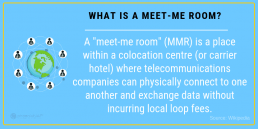
Data Exchange and How it Works
Sending data out to the Internet requires a connection to an Internet Service Provider (ISP).
When two organizations are geographically far apart, the data exchange occurs through a global ISP. Hence, if one system wants to communicate with the other, it first needs to exchange the information with the ISP. Then, the ISP routes the packets to the target system. This process is necessary when two systems are located in different countries or continents. In these cases, a global ISP is crucial for the uninterrupted flow of traffic between the parties.
However, when two organizations are geographically close to each other, they can physically connect. A meet-me room in a data center or carrier hotel enables the two systems to exchange information directly.
Benefits of a Meet-me Room
All colocation data centers house an MMR. Most data centers are carrier neutral. Being carrier neutral means there is a wide selection of network providers for tenants to choose from. When there are more carriers, the chances are higher for customers to contract with that data center. The main reason is that by having multiple choices for providers, customers can improve flexibility, redundancy, and optimize their connection.
The benefits of meet-me rooms include:
- Reduced latency: High-bandwidth, direct connection decreases the number of network hops to a minimum. By eliminating network hops, latency is reduced substantially.
- Reduced cost: By connecting directly through a meet-me room, carriers bypass local loop charges. With many carriers in one place, customers may find more competitive rates.
- Quick expansion: MMRs are an excellent method to provide more fiber connection options for tenants. Carrier neutral data centers can bring more carriers and expand their offering.
Security and Restricted Access
Meet-me rooms are monitored and secure areas within a data center typically encased in fire-rated walls. These areas have restricted access, and unescorted visits are impossible. Multi-factor authentication prevents unauthorized personnel from entering the MMR space.
Cameras record every activity in the room. With a 24/7 surveillance system and biometric scans, security breaches are extremely rare.

Meet-me Room Design
The design and size of meet-me rooms can vary significantly in different colocation and data centers. For example, phoenixNAP’s MMR is a 3000 square foot room with a dedicated cross-connect room. Generally, MMRs should provide sufficient expansion space for new carriers. Potential clients avoid leasing space within a data center that cannot accommodate new ISPs.
One of the things MMRs should offer is 45U cabinets for carriers and network providers’ equipment. MMRs do not always have both AC and DC power options. If the facility only provides one type of power, the design should offer more space for additional carrier equipment.
Cooling is an essential part of every MMR. Data centers and colocation providers take into consideration what type of equipment carriers will install in the meet-me room. High-performance cooling units make sure the MMR temperature always stays within acceptable ranges.
Entrance for Carriers
Network carriers enter a data center’s meet-me room by running a fiber cable from the street to the cross-connect room. One of the possible ways is to use meet-me vaults, sometimes referred to as meet-me boxes. These infrastructure points are essential for secure carrier access to the facility. When appropriately designed, each plays a significant role in bringing a high number of providers to the data center.
Vaults
A meet-me vault is a concrete box for carriers’ fiber optic entry into the facility. Achieving maximum redundancy requires more than one vault in large data centers or carrier hotels.
Meet-me vaults are dug under the surface located at the perimeter of a data center. The closer the meet-me vaults are to the providers’ cable network, the lower the costs are to connect to the facility’s infrastructure. Multiple points of entry and well-positioned meet-me vaults attract more providers. In turn, colocation pricing models are also lower for potential customers of the data center.
The design itself allows dozens of providers to bring high bandwidth connection without sharing the ducts. From meet-me vaults, cables go into the cross-connect room through reinforced trenches.
Cross-Connect Room
A cross-connect room (CCR) is a highly secure location within a data center where carriers connect to customers. In these cases, the fiber may go from the CCR to the carrier’s equipment in the meet-me room or other places in the data center. The primary purpose is to establish cross-connects between tenants and different service providers.
Access to cross-connect rooms is minimal. With carriers’ hardware located in the meet-me rooms, CCRs are a strong fiber entry point.
The Most Critical Room in a Data Center
Meet-me rooms are a critical point for uninterrupted Internet exchange and ensure smooth transmission of data between tenants and carriers Enterprise benefit by establishing a direct connection with their partners and service providers.
Recent Posts
Data Center Security: Physical and Digital Layers of Protection
Data is a commodity that requires an active data center security strategy to manage it properly. A single breach in the system will cause havoc for a company and has long-term effects.
Are your critical workloads isolated from outside cyber security threats? That’s the first guarantee you’ll want to know if your company uses (or plans to use) hosted services.
Breaches into trusted data centers tend to happen more often. The public notices when news breaks about advanced persistent threat (APT) attacks succeeding.
To stop this trend, service providers need to adopt a Zero Trust Model. From the physical structure to the networked racks, each component is designed with this in mind.
Zero Trust Architecture
The Zero Trust Model treats every transaction, movement, or iteration of data as suspicious. It’s one of the latest intrusion detection methods.
The system tracks network behavior, and data flows from a command center in real time. It checks anyone extracting data from the system and alerts staff or revokes rights from accounts an anomaly is detected.
Security Layers and Redundancies of Data Centers
Keeping your data safe requires security controls, and system checks built layer by layer into the structure of a data center. From the physical building itself, the software systems, and the personnel involved in daily tasks.
You can separate the layers into a physical or digital.
Data Center Physical Security Standards
Location
Assessing whether a data center is secure starts with the location.
A trusted Data Center’s design will take into account:
- Geological activity in the region
- High-risk industries in the area
- Any risk of flooding
- Other risks of force majeure
You can prevent some of the risks listed above by having barriers or extra redundancies in the physical design. Due to the harmful effects, these events would have on the operations of the data center; it’s best to avoid them altogether.
The Buildings, Structures, and Data Center Support Systems
The design of the structures that make up the data center needs to reduce any access control risks. The fencing around the perimeter, the thickness, and material of the building’s walls, and the number of entrances it has. All these affect the security of the data center.
Some key factors will also include:
- Server cabinets fitted with a lock.
- Buildings need more than one supplier for both telecom services and electricity.
- Extra power backup systems like UPS and generators are critical infrastructure.
- The use of mantraps. This involves having an airlock between two separate doors, with authentication required for both doors
- Take into account future expansion within the same boundary
- Separate support systems from the white spaces allow authorized staff members to perform their tasks. It also stops maintenance and service technicians from gaining unsupervised entry.
Physical Access Control
Controlling the movement of visitors and staff around the data center is crucial. If you have biometric scanners on all doors – and log who had access to what and when – it’ll help to investigate any potential breach in the future.
Fire escapes and evacuation routes should only allow people to exit the building. There should not be any outdoor handles, preventing re-entry. Opening any safety door should sound an alarm.
All vehicle entry points should use reinforced bollards to guard against vehicular attacks.
Secure All Endpoints
Any device, be it a server, tablet, smartphone or a laptop connected to a data center network is an endpoint.
Data centers give out rack and cage space to clients whose security standards may be dubious. If the customer doesn’t secure the server correctly, the entire data center might be at risk. Attackers are going to try to take advantage of unsecured devices connected to the internet.
For example, most customers want remote access to the power distribution unit (PDU), so they could remotely reboot their servers. Security is a significant concern in such use cases. It is up to facility providers to be aware of and secure all devices connected to the internet.
Maintain Video and Entry Logs
All logs, including video surveillance footage and entry logs, should be kept on file for a minimum of three months. Some breaches are identified when it is already too late, but records help identify vulnerable systems and entry points.
Document Security Procedures
Having strict, well-defined and documented procedures is of paramount importance. Something as simple as a regular delivery needs to well planned to its core details. Do not leave anything open for interpretation.
Run Regular Security Audits
Audits may range from daily security checkups, and physical walkthroughs to quarterly PCI and SOC audits.
Physical audits are necessary to validate that the actual conditions conform to reported data.
Digital Layers of Security in a Data Center
As well as all the physical controls, software, and networks make up the rest of the security and access models for a trusted data center.
There are layers of digital protection that aim to prevent security threats from gaining access.
Intrusion Detection and Prevention Systems
This system checks for advanced persistent threats (APT). It focuses on finding those that have succeeded in gaining access to the data center. APTs are typically sponsored attacks, and the hackers will have a specific goal in mind for the data they have collected.
Detecting this kind of attack requires real-time monitoring of the network and system activity for any unusual events.
Unusual events could include:
- An increase of users with elevated rights accessing the system at odd times
- Increase in service requests which might lead to a distributed-denial of service attack (DDoS)
- Large datasets appearing or moving around the system.
- Extraction of large datasets from the system
- Increase in phishing attempts to crucial personnel
To deal with this kind of attack, intrusion detection and prevention systems (IDPS) use baselines of normal system states. Any abnormal activity gets a response. IDP now uses artificial neural networks or machine learning technologies to find these activities.
Security Best Practices for Building Management Systems
Building management systems (BMS) have grown in line with other data center technologies. They can now manage every facet of a building’s systems. That includes access control, airflow, fire alarm systems, and ambient temperature.
A modern BMS comes equipped with many connected devices. They send data or receive instructions from a decentralized control system. The devices themselves may be a risk, as well as the networks they use. Anything that has an IP address is hackable.
Secure Building Management Systems
Security professionals know that the easiest way to take a data center off the map is by attacking its building management systems.
Manufacturers may not have security in mind when designing these devices, so patches are necessary. Something as insignificant as a sprinkler system can destroy hundreds of servers if set off by a cyber-attack.
Segment the System
Segmenting the building management systems from the main network is no longer optional. What’s more, even with such precautionary measures, attackers can find a way to breach the primary data network.
During the infamous Target data breach, the building management system was on a physically separate network. However, that only slowed down the attackers as they eventually jumped from one network to another.
This leads us to another critical point – monitor lateral movement.
Lateral Movement
Lateral movement is a set of techniques attackers use to move around devices and networks and gain higher privileges. Once attackers infiltrate a system, they map all devices and apps in an attempt to identify vulnerable components.
If the threat is not detected early on, attackers may gain privileged access and, ultimately, wreak havoc. Monitoring for lateral movement limits the time data center security threats are active inside the system.
Even with these extra controls, it is still possible that unknown access points can exist within the BMS.
Secure at the Network Level
The increased use of virtualization-based infrastructure has brought about a new level of security challenges. To this end, data centers are adopting a network-level approach to security.
Network-level encryption uses cryptography at the network data transfer layer, which is in charge of connectivity and routing between endpoints. The encryption is active during data transfer, and this type of encryption works independently from any other encryption, making it a standalone solution.
Network Segmentation
It is good practice to segment network traffic at the software level. This means classifying all traffic into different segments based on endpoint identity. Each segment is isolated from all others, thus acting as an independent subnet.
Network segmentation simplifies policy enforcement. Furthermore, it contains any potential threats in a single subnet, preventing it from attacking other devices and networks.
Virtual Firewalls
Although the data center will have a physical firewall as part of its security system, it may also have a virtual firewall for its customers. Virtual firewalls watch upstream network activity outside of the data center’s physical network. This helps in finding packet injections early without using essential firewall resources.
Virtual firewalls can be part of a hypervisor or live on their own virtualized machines in a bridged mode.
Traditional Threat Protection Solutions
Well-known threat protection solutions include:
- Virtualized private networks and encrypted communications
- Content, packet, network, spam, and virus filtering
- Traffic or NetFlow analyzers and isolators
Combining these technologies will help make sure that data is safe while remaining accessible to the owners.
Data Center Security Standards

The classification system sets standards for data center’s’ controls that ensure availability. As security can affect the uptime of the system, it forms part of their Tier Classification Standard.
There are four 4 tiers defined by the system. Each tier maps to a business need that depends on what kind of data is being stored and managed.
Tiers 1 & 2
Seen as tactical services, Tier 1 and 2 will only have some of the security features listed in this article. They are low cost and used by companies who do not want real-time access to their data and who won’t suffer financially due to a temporary system failure.
They are mainly used for offsite data storage.
Tiers 3 & 4
These tiers have higher levels of security. They have built-in redundancies that ensure uptime and access. Providing mission critical services for companies who know the cost of damage to a reputation a break in service creates.
These real-time data processing facilities provide the highest standards of security.
Take Data Center Security Seriously
More and more companies are moving their critical workloads and services to hosted servers and cloud computing infrastructure. Data centers are prime targets for bad actors.
Measuring your service providers against the best practices presented in this article is essential.
Don’t wait for the next major breach to occur before you take action to protect your data. No company wants to be the next Target or Equifax.
Want Work With a State of the Art Secure Data Center?
Contact us today!
Recent Posts
What is a Security Operations Center (SOC)? Best Practices, Benefits, & Framework
In this article you will learn:
- Understand what a Security Operations Center is and active how detection and response prevent data breaches.
- Six pillars of modern security operations you can’t afford to overlook.
- The eight forward-thinking SOC best practices to keep an eye on the future of cybersecurity. Including an overview and comparison of current Framework Models.
- Discover why your organization needs to implement a security program based on advanced threat intelligence.
- In-house or outsource to a managed security provider? We help you decide.
The average total cost of a data breach in 2018 was $3.86 million. As businesses grow increasingly reliant on technology, cybersecurity is becoming a more critical concern.
Cloud security can be a challenge, particularly for small to medium-sized businesses that don’t have a dedicated security team on-staff. The good news is that there is a viable option available for companies looking for a better way to manage security risks – security operations centers (SOCs).
In this article, we’ll take a closer look at what SOCs are, the benefits that they offer. We will also take a look at how businesses of all sizes can take advantage of SOCs for data protection.
What is a Security Operations Center?
A security operations center is a team of cybersecurity professionals dedicated to preventing data breaches and other cybersecurity threats. The goal of a SOC is to monitor, detect, investigate, and respond to all types of cyber threats around the clock.
Team members make use of a wide range of technological solutions and processes. These include security information and event management systems (SIEM), firewalls, breach detection, intrusion detection, and probes. SOCs have many tools to continuously perform vulnerability scans of a network for threats and weaknesses and address those threats and deficiencies before they turn into a severe issue.
It may help to think of a SOC as an IT department that is focused solely on security as opposed to network maintenance and other IT tasks.
6 Pillars of Modern SOC Operations
Companies can choose to build a security operations center in-house or outsource to an MSSP or managed security service providers that offer SOC services. For small to medium-sized businesses that lack resources to develop their own detection and response team, outsourcing to a SOC service provider is often the most cost-effective option.
Through the six pillars of security operations, you can develop a comprehensive approach to cybersecurity.
-
-
Establishing Asset Awareness
The first objective is asset discovery. The tools, technologies, hardware, and software that make up these assets may differ from company to company, and it is vital for the team to develop a thorough awareness of the assets that they have available for identifying and preventing security issues.
-
Preventive Security Monitoring
When it comes to cybersecurity, prevention is always going to be more effective than reaction. Rather than responding to threats as they happen, a SOC will work to monitor a network around-the-clock. By doing so, they can detect malicious activities and prevent them before they can cause any severe damage.
-
Keeping Records of Activity and Communications
In the event of a security incident, soc analysts need to be able to retrace activity and communications on a network to find out what went wrong. To do this, the team is tasked detailed log management of all the activity and communications that take place on a network.
-
-
Ranking Security Alerts
When security incidents do occur, the incident response team works to triage the severity. This enables a SOC to prioritize their focus on preventing and responding to security alerts that are especially serious or dangerous to the business.
-
Modifying Defenses
Effective cybersecurity is a process of continuous improvement. To keep up with the ever-changing landscape of cyber threats, a security operations center works to continually adapt and modify a network’s defenses on an ongoing, as-needed basis.
-
Maintaining Compliance
In 2019, there are more compliance regulations and mandatory protective measures regarding cybersecurity than ever before. In addition to threat management, a security operations center also must protect the business from legal trouble. This is done by ensuring that they are always compliant with the latest security regulations.
Security Operations Center Best Practices
As you go about building a SOC for your organization, it is essential to keep an eye on what the future of cybersecurity holds in store. Doing so allows you to develop practices that will secure the future.
SOC Best Practices Include:
Widening the Focus of Information Security
Cloud computing has given rise to a wide range of new cloud-based processes. It has also dramatically expanded the virtual infrastructure of most organizations. At the same time, other technological advancements such as the internet of things have become more prevalent. This means that organizations are more connected to the cloud than ever before. However, it also means that they are more exposed to threats than ever before. As you go about building a SOC, it is crucial to widen the scope of cybersecurity to continually secure new processes and technologies as they come into use.
Expanding Data Intake
When it comes to cybersecurity, collecting data can often prove incredibly valuable. Gathering data on security incidents enables a security operations center to put those incidents into the proper context. It also allows them to identify the source of the problem better. Moving forward, an increased focus on collecting more data and organizing it in a meaningful way will be critical for SOCs.
Improved Data Analysis
Collecting more data is only valuable if you can thoroughly analyze it and draw conclusions from it. Therefore, an essential SOC best practice to implement is a more in-depth and more comprehensive analysis of the data that you have available. Focusing on better data security analysis will empower your SOC team to make more informed decisions regarding the security of your network.
Take Advantage of Security Automation
Cybersecurity is becoming increasingly automated. Taking DevSecOps best practices to complete more tedious and time-consuming security tasks free up your team to focus all of their time and energy on other, more critical tasks. As cybersecurity automation continues to advance, organizations need to focus on building SOCs that are designed to take advantage of the benefits that automation offers.
Security Operations Center Roles and Responsibilities
A security operations center is made up of a number of individual team members. Each team member has unique duties. The specific team members that comprise the incident response team may vary. Common positions – along with their roles and responsibilities – that you will find in a security team include:
-
SOC Manager
The manager is the head of the team. They are responsible for managing the team, setting budgets and agendas, and reporting to executive managers within the organization.
-
Security Analyst
A security analyst is responsible for organizing and interpreting security data from SOC report or audit. Also, providing real-time risk management, vulnerability assessment, and security intelligence provide insights into the state of the organization’s preparedness.
-
Forensic Investigator
In the event of an incident, the forensic investigator is responsible for analyzing the incident to collect data, evidence, and behavior analytics.
-
Incident Responder
Incident responders are the first to be notified when security alerts happen. They are then responsible for performing an initial evaluation and threat assessment of the alert.
-
Compliance Auditor
The compliance auditor is responsible for ensuring that all processes carried out by the team are done so in a way that complies with regulatory standards.
SOC Organizational Models
Not all SOCs are structured under the same organizational model. Security operations center processes and procedures vary based on many factors, including your unique security needs.
Organizational models of security operations centers include:
- Internal SOC
An internal SOC is an in-house team comprised of security and IT professionals who work within the organization. Internal team members can be spread throughout other departments. They can also comprise their own department dedicated to security. - Internal Virtual SOC
An internal virtual SOC is comprised of part-time security professionals who work remotely. Team members are primarily responsible for reacting to security threats when they receive an alert. - Co-Managed SOC
A co-managed SOC is a team of security professionals who work alongside a third-party cybersecurity service provider. This organizational model essentially combines a semi-dedicated in-house team with a third-party SOC service provider for a co-managed approach to cybersecurity. - Command SOC
Command SOCs are responsible for overseeing and coordinating other SOCs within the organization. They are typically only found in organizations large enough to have multiple in-house SOCs. - Fusion SOC
A fusion SOC is designed to oversee the efforts of the organization’s larger IT team. Their objective is to guide and assist the IT team on matters of security. - Outsourced Virtual SOC
An outsourced virtual SOC is made up of team members that work remotely. Rather than working directly for the organization, though, an outsourced virtual SOC is a third-party service. Outsourced virtual SOCs provide security services to organizations that do not have an in-house security operations center team on-staff.
Take Advantage of the Benefits Offered by a SOC
Faced with ever-changing security threats, the security offered by a security operations center is one of the most beneficial avenues that organizations have available. Having a team of dedicated information security professionals monitoring your network, security threat detection, and working to bolster your defenses can go a long way toward keeping your sensitive data secure.
If you would like to learn more about the benefits offered by a security operations center team and the options that are available for your organization, we invite you to contact us today.
Recent Posts
The 15 Point Server Maintenance Checklist IT Pros Depend On
Servers are an essential component of any enterprise in 2019. Did you know servers require maintenance like any other equipment?
Keeping a server running is more involved than loading the latest patches and updates. Use our server maintenance checklist to ensure the smooth operation of your server and avoid downtime.
Here’s is our list of 15 server maintenance tips to help you better manage your hardware and avoid the most common issues.
Server Data Verification
1. Double-Check & Verify Your Backups
If you’ve ever had to recover from a catastrophic drive failure, you know how important data is to the smooth operation of a business.
With a good backup strategy, it’s better to have them and not need them, than need them and not have them. Schedule a few minutes every week (or every day) to check the server backups. Alternately, you can mirror the server environment to a virtual machine in the cloud and test it regularly.
2. Check the RAID array
Many dedicated servers run a RAID (Redundant Array of Independent Disks) array. Basically, multiple hard drives acting as one storage device in the event of a single disk failure.
Some types of RAID are designed for performance, others for redundancy. In most cases, modern RAID arrays have advanced monitoring tools. A quick glance at your RAID monitoring utility can alert you to potential drive failures. This lets you plan drive replacements and rebuilds in a way that minimizes downtime.
3. Verify Storage Utilization
Periodically check your server’s hard drive usage. Servers generate a lot of log files, old emails, and outdated software packages.
If it’s important to keep old log files, consider archiving them to external storage. Old emails can also be archived or deleted. Some application updaters don’t remove old files. Fortunately, some package managers have built-in cleanup protocols that you can use. You can also find third-party utilities for managing old software files.
Hard drives are not just used for storage. They also use a swap file, which acts like physical memory. If disk utilization gets above 90%, it can interfere with the swap file, which can severely degrade performance.
Software & Server System Checks
4. Review Server Resource Usage
In addition to reviewing disk space, it’s also smart to watch other server usages.
Memory and processor usage can show how heavily a server is being used. If CPU and memory usage are frequently near 100%, it’s a sign that your server may be overtaxed. Consider reducing the burden on your hardware by upgrading, or by adding additional servers.
5. Update Your Control Panel
Control panel software (such as cPanel) must be updated manually. When updating cPanel, only the control panel is updated. You still need to update the applications that it manages, such as Apache and PHP.
6. Update Software Applications
Depending on your server configuration, you may have many different software applications. Some systems have package managers that can automatically update software. For those that don’t, create a schedule to review available software updates.
This is especially true for web-based applications, which account for the vast majority of breaches. Keep in mind that some operating systems may specifically require older application versions – Python 2 for CentOS7, for example. In cases where you must use older software in a production environment, take care to avoid exposing such software to an open network.
7. Examine Remote Management Tools
Check remote management tools including the remote console, remote reboot, and rescue mode. These are especially important if you run a cloud-based virtual server environment, or are managing your servers remotely.
Check in on these utilities regularly to make sure they are functional. Rebooting can solve many problems on its own. A remote console allows you to log in to a server without being physically present. Rescue mode is a Red Hat solution, but most server operating systems have a management or “safe” mode you can remotely boot to make repairs.
8. Verify Network Utilization
Much like memory and CPU usage, server loads have a network capacity. If your server is getting close to the maximum capacity of the network hardware, consider installing upgrades. In addition to the capacity of the network, you might consider using network monitoring tools. These tools can watch your network traffic for unusual or problematic usage.
Monitoring traffic patterns can help you optimize your web traffic. For example, you might migrate frequently-accessed resources to a faster server. You might also track unusual behavior to identify intrusion attempts and data breaches, and manage them proactively.
9. Verify Operating System Updates
OS updates can be a tricky field to navigate. One the one hand, patches, and updates can resolve security issues, expand functionality, and improve performance. Hackers often plan cybersecurity attacks around “zero-day” exploits. That is, they look at the OS patches that are released, and attack those weaknesses before a business can patch the vulnerability.
On the other hand, custom software can experience conflicts and instability with software updates. Dedicate time regularly to review OS updates. If you have a sensitive production environment, consider creating a test environment to test updates before rolling them out to production.
Server Hardware
10. Physically Clean Server Hardware
Schedule time regularly to physically clean and inspect servers to prevent hardware failure. This helps keep dust and debris out of the circuit boards and fans.
Dust buildup interferes with heat management, and heat is the enemy of server performance. While you’re cleaning, visually inspect the servers and server environment. Make sure the cabinets have plenty of airflow. Check for any unusual wiring of connections. An unexpected flash drive might be a security breach. An unauthorized network cable might create a data privacy concern.
11. Check for Hardware Errors
Modern server operating systems maintain logs of hardware errors.
A hardware error could be a SMART error on a failing hard drive, a driver error for a failing device, or random errors that could indicate a memory problem. Checking your error logs can help you pinpoint and resolve a hardware problem before it escalates to a system crash.
Security Monitoring
12. Review Password Security
Evaluate your password policy regularly. If you are not using an enterprise password management system, start now.
You should have a system that automates good password hygiene. If you don’t, this can be a good time to instruct users to change passwords manually.
13. Evaluate User Accounts
Most businesses have some level of turnover, and it’s easy for user accounts to be overlooked.
Review the user account list periodically, and remove any user accounts no longer needed. You can also check account permissions, to make sure they are appropriate for each user. While reviewing this data, you should also examine client data and accounts. You may need to manually remove data for former clients to avoid legal or security complication
14. Consider Overall Server Security
Evaluate your server security policies to make sure that they are current and functioning. Consider using a third-party network security tool to test your network from the outside. This can help identify areas that you’ve overlooked, and help you prevent breaches before they occur.
15. Check Server Logs Regularly
Servers maintain logs that track access and errors on the server. These logs can be extensive, but some tools and procedures make them easier to manage.
Review your logs regularly to stay familiar with the operation of your servers. A logged error might identify a hardware issue that you can fix before it fails. Anomalies in access logs might mean unauthorized usage by users or unauthorized access from an intruder.
Regular Server Maintenance Reduces Downtime & Failures
With this checklist, you should have a better understanding of how to perform routine server maintenance.
Regular maintenance ensures that minor server issues don’t escalate into a disastrous system failure. Many server failures as a result of preventable situations due to poor planning.
Recent Posts
Understanding Data Center Compliance and Auditing Standards
One of the most important features of any data center is its security.
After all, companies are trusting their mission-critical data to be contained within the facility.
In recent years, security has grown even more critical for businesses. Whether you store your data in an in-house data center or with a third-party provider, cyber-attacks and are a real and growing threat to your operations. Do they have a plan to prevent DDoS attacks?
Every year, the number of security incidents grows, and the volume of compromised data amplifies proportionally.
In the first 6 months of 2018, 3,353,172,708 records were compromised. An increase of 72% compared to the same period of 2017. According to the Breach Level Index,
Correspondingly, data protection on all levels matters more than ever. Securing your data center or choosing a compliant provider should be the core of your security strategy.
The reality is that cyber security incidents and attacks are growing more frequent and more aggressive.
What are Data Center Security Levels?
Data center security standards help enforce data protection best practices. Understanding their scope and value is essential for choosing a service provider. It also plays a role in developing a long-term IT strategy that may involve extensive outsourcing.
This article covers critical data center standards and their histories of change. In addition to learning what these standards mean, businesses also need to keep in the loop with any operating updates that may affect them.
The true challenge is that many outside of the auditing realm may not fully understand the different classifications. They may not even know what to look for in a data center design and certification.
To help you make a more informed decision about your data center services, here is an overview of concepts you should understand.

Data Center Compliance
SSAE 18 Audit Standard & Certification
A long-time standard throughout the data center industry, SAS 70 was officially retired at the end of 2010. Soon after its discontinuation, many facilities shifted to SSAE 16.
However, it’s essential to understand that there is no certification for SSAE 16. It is a standard developed by the Auditing Standards Board (ASB) of the American Institute of Certified Public Accountants (AICPA).
Complicated acronyms aside, the SSAE 16 is not something a company can achieve. It is an attestation standard used to give credibility to organizational processes. As opposed to SAS 70, SSAE 16 required service providers to “provide a written assertion regarding the effectiveness of controls.” That way, SSAE 18 introduced a more effective control of a company’s processes and systems, while SAS 70 was mostly an auditing practice.
It is important to mention that SSAE 16 used to result in a Service Organization Control (SOC or security operations center) 1 report. This report is still in use and provides insights into the company’s reporting policies and processes.
After years of existence, SSAE 16 was recently replaced with a revised version. As of May 1, 2017, it can no longer be issued, and an improved SSAE 18 is used instead.
SSAE 18 builds upon the earlier version with several significant additions. Both of them refer to the risk assessment processes, which were previously a part of SOC 2 certification only.
The updates to SSAE 18 include:
- The guidance on risk assessment. This part helps enforce organizations to assess and review potential technology risks regularly.
- Complementary Sub service Organization Controls. A new section in the standard aims to give more clarity to the activities of a specific third-party vendor.
With these changes, the updated standard aims to further improve data center monitoring. One of the most important precautionary measures against breaches and fraudulent actions, monitoring of critical systems and activities, is a foundation of secure organizations. That may have created a bit more work for a service provider, but it also takes their security to the next level.
Of the reports relevant to data centers, SOC 1 is the closest to the old SAS 70. The service organization (data center) defines internal controls against which audits are performed.
The key purpose of SOC 1 is to provide information about a service provider’s control structure. It is particularly crucial for SaaS and technology companies that offer some vital services to businesses. In that respect, they are more integrated into their clients’ processes than a general business partner or collaborator would be.
SOC 1 also applies anytime customers’ financial applications or underlying infrastructure are involved. Cloud would qualify for this type of report. However, SOC 1 does not apply to colocation providers that are not performing managed services.
SOC 2 is exclusively for service organizations whose controls are not relevant to customers’ financial applications or reporting requirements. Colocation data center facilities providing power and environmental controls would qualify here. However, unlike a SOC 1, the controls are provided (or prescribed) by the AICPA (Trust Services Principles) and audited against.
Becoming SOC 2 complaint is a more rigorous process. It requires service providers to report on all the details regarding their internal access and authorization control practices, as well as monitoring and notification processes.
SOC 3 requires an audit similar to SOC 2 (prescribed controls). However, it includes no report or testing tables. Any consumer-type organization might choose to go this route so they could post a SOC logo on their websites, etc.

Additional Compliance Standards
HIPAA and PCI DSS are two critical notions to understand when evaluating data center security.
HIPAA
HIPAA (Health Insurance Portability and Accountability Act) regulates data, Cloud storage security, and management best practices in the healthcare industry. Given the sensitive nature of healthcare data, any institution that handles them must follow strict security practices.
HIPAA compliance also touches data center providers. In fact, it applies to any organization that works with a healthcare provider and has access to medical data. HIPAA considers all such organizations Business Associate healthcare providers.
If you or your customers have access to healthcare data, you need to check if you are using a HIPAA Compliant Hosting Provider. This compliance guarantees that it can deliver the necessary levels of data safety. Also, it can provide the documentation you may need to submit to prove compliance.
PCI-DSS Payment Card Industry Data Security Standard
As for PCI DSS (Payment Card Industry Data Security Standard), it is a standard related to all types of e-commerce businesses. Any website or company that accepts online transactions must be PCI DSS verified. We have created a PCI compliance checklist to assist.
PCI DSS was developed by the PCI SSC (Payment Card Industry Security Standards Council), whose members included credit card companies such as Visa, Mastercard, American Express, etc. The key idea behind their collaborative effort to develop this standard was to help improve the safety of customers’ financial information.
PCI DSS 3.2 was recently updated. It involves a series of updates to address mobile payments. By following the pace of change in the industry, PCI remains a relevant standard for all e-commerce businesses.

Concluding Thoughts: Data Center Auditing & Compliance
Data center security auditing standards continue to evolve.
The continuous reviews and updates help them remain relevant and offer valuable insight into a company’s commitment to security. It is true that these standards generate a few questions from time to time and cannot provide a 100% guarantee on information safety.
However, they still help assess a vendor’s credibility. A managed security service provider that makes an effort to comply with government regulations is more likely to offer quality data protection. This is particularly important for SaaS and IaaS providers. Their platforms and services become vital parts of their clients’ operations and must provide advanced security.
When choosing your data center provider, understanding these standards can help you make a smarter choice. If you are unsure which one applies to the data center, you can always ask.
Check if their standards match what the AICPA and other organizations set out. That will give you peace of mind about your choice and your data safety.
Recent Posts
Data Center Power Design & Infrastructure: What You Need To Know
There are many considerations when selecting a data center.
While overall security of a data center, capacity, and scalability are likely at the top of your list, the power that brings a data center to life and keeps you up and running is an essential, but often overlooked component.
No matter your online presence, electricity is the backbone. Understanding how power relates to data center design is critical for both continuity and security.
Learning more about the role of power in the data center, how things work and the trends you should be aware of will help you make the best choices for your organization.
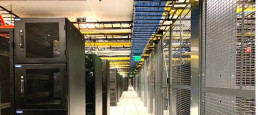
Data Center Energy Basics: Electricity 101
Without power, even the most advanced and powerful network is merely a pile of metal scrap. No matter how sophisticated your setup is, unless it is getting and using power efficiently, you could be missing out. Here are some basic terms to know when it comes to data center power.
AC and DC Power: You have two options when it comes to powering your data center — or any other device that uses electricity. AC power or Alternating Current power is the power you think of when you plug in a device, appliance or tool. Currents of 120 or 240 volts power on demand — simply plug your item into the nearest outlet, and you are ready to go. The “alternating” part of this type of power comes from the way it is delivered; it can change direction multiple times in a single minute to optimize performance and efficiency.
DC power or Direct Current power relies on batteries; your laptop, your phone, and other devices that can be connected to an AC outlet to charge and then run off of the battery. A direct current runs in only one direction and is more reliable than Alternating current, making it an ideal way to avoid. While the majority of colocation data centers rely on alternating current for power, more and more organizations are incorporating DC power and a combination of the two types to enhance energy efficiency and reduce downtime.
Power usage effectiveness, or PUE, is a figure that represents the ratio of power available to a data center vs. the power consumed by IT equipment. PUE is an expression of efficiency; this number can reveal how much power your servers themselves are using and how much is being used on non-server/non-IT tasks. A high PUE means that you could be running more efficiently than you are and that you may be using too much power. A low PUE means you are running optimally and that you have little waste.
Determine the PUE of your center by dividing the total energy consumed by your entire facility by the energy consumed by your IT equipment. The resulting figure is your PUE, which will ideally be as close to 1 as possible. Why so low? Lower ratios mean that you are using most of your energy to get the actual job done – -not to power the office, lights and other support items.
Data Center Efficiency Metrics
Electricity is measured in specific terms; each is detailed below and will help you understand what your organization needs to meet your power and energy efficiency goals.
- Amperes: Also called “amps,” this is the actual moving electricity that is running through your wires and to your servers and equipment. Each of your devices, from your workstations to your laptops and servers, uses a specific amount of amps to run.
- Volts: The power that “pushes” the electricity from the source and to your outlets and devices; actual voltage depends on location, the choices made during construction and setup and even the manufacturer of the piece you are using. Both batteries and outlets provide power that can be measured in volts — from a little as 1.5 volts for a small battery to 110 or 220 in a typical office or home outlet.
- Watts: The actual amount of power your server or device uses is measured in watts. This figure goes up the more you use your equipment; it also rises when your equipment multi-tasks or solves complex problems. An ASIC or GPU device mining cryptocurrency or performing complex tasks will use more your data center server or one of your workstations, due to the work it is performing.
The power that is available to your data center, the way that energy is used, and even the amount of electricity your pieces consume all have an impact on your costs, efficiency and even productivity.
Power in the Data Center
All those watts and volts need to go somewhere, and the typical data center has a variety of needs; some of these are more obvious than others. While each organization is different, a data center needs the following to run efficiently:
- Servers: The actual units doing the work, storing the data and providing support for your brand, racks and other related items.
- Cooling: Servers and related equipment generate heat; you need to power equipment that will keep your hardware cool to prevent damage and extend its life.
- Inverters: You won’t notice these until you need them. Inverters store power and launch when the AC power source is disrupted. This prevents downtime, data loss, and interruption of service.
- Support: Someone has to look after the servers, ensure the location is physically secure and respond to problems. Any support staff onsite needs the typical power and electricity support of an office. Count on lights, workstations, HVAC and more for your on-site team.
- Security: Alarms, physical security that prevents others from accessing your center or equipment.

Understanding Power Usage Effectiveness (PUE)
Understanding how energy is measured and deployed in the typical data center can help you make changes that will increase your efficiency and lower your costs. From a basic understanding of how electricity is measured to the impact that non-IT energy consumption has on your bottom line.
Power usage effectiveness, or PUE, is a figure that represents the ratio of power available to a data center vs. the power consumed by IT equipment. PUE is an expression of efficiency; this number can reveal how much power your servers themselves are using and how much is being used on non-server/non-IT tasks. A high PUE means that you could be running more efficiently than you are and that you may be using too much power for your data center. A low PUE means you are running optimally and that you have little waste.
Determine the PUE of your center by dividing the total energy consumed by your entire facility by the energy consumed by your IT equipment. The resulting figure is your PUE, which will ideally be as close to 1 as possible. Why so low? Lower ratios mean that you are using most of your energy to get the actual job done – -not to power the office, lights, and other support items.
An ideal target value for an existing data center is 1.5 or less (new centers should aim for 1.4 or less, according to Federal CIO targets and benchmarks. A PUE of 2.0 or higher indicates a need for review. There are likely areas of inefficiency that are adding to costs and not beneficial.
In Closing, Considering Data Center Power Design
This information allows you to make informed decisions when choosing a data center. The best provider ensures that the power infrastructure is in place to guarantee the highest uptime possible. Learn more about our state of the art data centers worldwide.
Recent Posts
Colocation vs Cloud Computing : Best Choice For Your Organization?
In today’s modern technology space, companies are opting to migrate from on-premises hardware to hosted solutions.
Every business wants the optimal cohesion between the best technology available and a cost-effective solution. Identifying the unique hosting needs of the business is crucial.
This decision is often instigated due to overhead cost but can spiderweb out into security opportunities, redundancy, disaster recovery, and many other factors. Both colocation providers and the cloud offer hosted computing solutions where data storage and are offsite in a data center.
To cater to the multitude of business sizes, data centers offer a wide range of customizable solutions. In this article, we are going to compare colocation to cloud computing services.
What is Cloud Computing?
Under a typical cloud service model, a data center delivers computing services directly to its customer through the Internet. The customer pays based on the usage of computing resources, much in the same way homeowners pay monthly bills for using water and electricity.
In cloud computing, the service provider takes total responsibility for developing, deploying, maintaining, and securing its network architecture and usually implements shared responsibility models to keep customer data safe.
What is Colocation?
Colocation is when a business places its own server in a third-party data center and uses its infrastructure and bandwidth to process data.
The key difference here is that the business retains ownership of its server software and physical hardware. It simply uses the colocation data center’s superior infrastructure to gain more bandwidth and better security.
Colocation services often include server management and maintenance agreements. These tend to be separate services that the colocation facility offers for a monthly fee. This can be valuable when businesses can’t afford to send IT specialists to and from the colocation facility on a regular basis.
Comparing Colocation & The Cloud
The decision between colocation vs. cloud computing is not a mutually exclusive one.
It is entirely feasible for companies to pick different solutions for completing various tasks.
For example, an organization may host most of its daily processing systems on a public cloud server, but host its mission-critical databases on its own server. Deploying that server on-site would be expensive and insecure, so the company will look for a colocation facility that can house and maintain its most crucial equipment.
This means that the decision between colocation and cloud hosting services is one that executives and IT professionals have to make based on each asset within the corporate structure. Merely migrating everything to a colocation facility or a cloud service provider often means missing out on critical opportunities to implement synergistic solutions.
How to Weigh the Benefits and Drawbacks for Individual IT Assets
Off-premise IT solutions like cloud hosting and colocation offer significant IT savings compared to expensive, difficult-to-maintain on-premises alternatives.
However, it takes a higher degree of clarity to determine where individual IT assets should go.
In many cases, this decision depends on the specific objectives that company stakeholders wish to obtain from particular tasks and processes.
It relies on the motive for migrating to an off-premises solution in the first place, whether the goal is security and compliance, for better connectivity, or for superior business continuity.
1. Security
Both cloud hosting and colocation data centers offer greater security when compared to on-premises solutions. Although executives often cite security concerns as one of the primary reasons holding them back from hosted services. The fact is that cloud computing is more secure than on-premises infrastructure.
Entrusting your company data to a third party may seem like a poor security move. However, dedicated managed service providers are better equipped to handle security issues. Service providers have resources and talent explicitly allocated to cybersecurity concerns, which means they can identify threats quicker and mitigate risks more comprehensively than in-house IT specialists.
When it comes to cloud infrastructure, the data security benefits are only as good as the service provider’s reputation. Reputable cloud hosting vendors have robust, multi-layered security frameworks in place and are willing to demonstrate their resilience.
A colocation strategy can be even better from a security perspective. But only if you have the knowledge, expertise, and resources necessary to implement a competitive security solution in-house.
Ideally, a colocation facility can take care of the security framework’s physical and infrastructural elements while your team operates a remote security operations center to cover the rest.
2. Compliance
Cloud storage can make compliance much more manageable for organizations that struggle to keep up with continually evolving demands placed on them by regulators. A reputable cloud service provider can offer on-demand compliance, shifting software and hardware packages to meet regulatory requirements on the fly. Often, the end-user doesn’t even notice the difference.
In highly regulated industries such as healthcare with HIPAA Compliance, the situation may be more delicate. Organizations that operate in these fields need to establish clear service level agreements that stipulate which party is responsible for regulatory compliance and where their respective obligations begin and end.
The same is true for colocation partners.
If your business is essentially renting space in a data center and installing your server there, you have to establish responsibility for compliance concerns from the beginning.
In most situations, this means that the colocation provider will take responsibility for the physical and hardware-related aspects of the compliance framework. Your team will be responsible for the software-oriented elements of compliance. This can be important when dealing with new or recently changed regulatory frameworks like Europe’s GDPR.
3. Connectivity
One of the primary benefits to moving computing processes into a data center environment is the ability to enjoy better and more comprehensive connectivity. This is one of the areas where well-respected data centers invest heavily in providing their clients best-in-class bandwidth, connection speed, and reliability.
On-prem solutions often lack state-of-the-art network infrastructure. Even those that enjoy state-of-the-art connectivity soon find themselves behind the looming threat of obsolescence as the marching beat of technological advance moves steadily forward.
Managed cloud computing agreements typically include clauses for updating system hardware and software in response to advances in the field. Cloud service providers have economic incentives to update their network hardware and connectivity devices since their infrastructure is the service they offer customers.
Colocation is an elegant way to maximize the throughput of a well-configured server. It allows a company to use optimal bandwidth – thanks to the colocation facility’s state-of-the-art infrastructure – without having to continually deploy, implement, and maintain updates to on-premises system architecture.
Both colocation and cloud computing also provide unique benefits to businesses looking for hosting in specific geographic areas. You can minimize page load and processing times by reducing the physical distance between users and the servers they need to access.
4. Backup and Disaster Recovery
Choosing colocation or cloud backup and disaster recovery is a definite value contributor that only comprehensive managed service providers offer. Creating, deploying, and maintaining redundant business continuity solutions are one of the most important things that any business or institution can do.
Colocation and cloud computing providers offer significant cost savings for backup and disaster recovery as built-in services. Businesses and end users have come to expect disaster recovery solutions as standard features.
But not all disaster recovery solutions enjoy the same degree of quality and resilience. Data centers that offer business continuity solutions also need to invest in top-of-the-line infrastructure to make those solutions usable.
If your business has to put its disaster recovery plan to the test, you want to know that you have enough bandwidth to potentially run your entire business off of a backup system indefinitely.
IT Asset Migration To The Cloud Or Colocation Data Center
IT professionals choosing between colocation vs. cloud need to carefully assess their technology environment to determine which solution represents the best value for their data and processes.
For example; an existing legacy system infrastructure can play a significant role in this decision. If you already own your servers and they can reasonably be expected to perform for several additional years, colocation can represent a crucial value compared to replacing aging hardware.
Determining the best option for migrating your IT assets requires expert consultation with experienced colocation and cloud computing specialists. Next-generation data management and network infrastructure can hugely improve cost savings for your business if implemented with the input of a qualified data center.
Find out whether colocation or cloud computing is the best option for your business. Have one of our experts assess your IT environment today.
Recent Posts
Bare Metal vs. Virtualization: What Performs Better?
Just because of the sheer volume of solutions out there, it is very challenging to generalize and provide a universally truthful answer to which is better, a bare metal or cloud solution. When you also throw in all the various use cases into the equation, you get a mishmash of advice.
However, we can all agree that each option has its advantages and disadvantages. In this article, I will try to provide an overview of strong points and shortcomings of both bare metal and cloud environments, with a single use case performance comparison.
Let us start with the pros and cons of a bare metal server.

Advanced Features of Bare Metal
Dollar for dollar, bare metal servers can process more data than any other solution. Just imagine 28 cores working their way through data, going as smooth as a knife through butter.
Of course, there are exceptions. If you are running a single-threaded application, it does not matter how much cores you throw at it; you will not see any benefit. To have your applications running in an optimal environment, you need to make sure you have chosen the right solution.
Single-tenant environment
It is kind of soothing to know that at any given point in time, 100 percent of a server’s resources are at your disposal. A bare metal or dedicated server is your private environment in that you can configure it any way you want.
In comparison, pick the wrong vendor for your public cloud solution, and you will feel like you are using public transportation – things will go slow, and you will not get anything done in time.
Another critical point is security, of course. Again, I will use the public transportation metaphor. Bare metal servers are like having your own car in the sense that you are isolated from the outer world, safe knowing that nobody can get in. Public cloud, on the other hand, can be like riding the bus, you never know who is getting on and whether someone will try to do something harmful.
Raw power and reliability
Picture Grand Tour host, Jeremy Clarkson, screaming “power” at the top of his lungs. Well, that is what you get with bare metal. It is fully customizable, and it ranges from state of the art powerhouses to inexpensive low-powered machines. If you are looking into dedicated bare metal, then you are in for it for the raw power of the latest and greatest CPUs, such as the Intel® Xeon® Scalable processors family. I am thinking something along the lines of a dual Intel® Xeon Gold 6142 (32 ×2.6GHz) 6-bay with 512 GB ECC DDR4 and additional SSD storage. I always say, if you want to overtake your competitors, you stand slim chances of doing it with a Ford Pinto.
Customization opportunities
You are the one who builds the configuration from the ground up and selects each component, so it is more than evident that bare metal provides ample room for customization. Besides hardware resources, you can have any operating system you like, or control panel, software option, and control panel add-on. You can even run your own environment with a virtualization hypervisor.
That brings us to an essential point.

You need to know what you are doing
Well, you or your IT team. Either way, provisioning a bare metal server demands knowledge, careful planning, diligent managing, and being well-aware of your requirements. However, a lot of maintenance can be outsourced. Our Managed Services for bare metal offers a full suite of services that complement your IT team.
Security
We have reached a point when we do not have to go through last year’s statistics, as we can all agree that ransomware and numerous other cyber threats are all around us.
When it comes to security, dedicated single tenant servers are as safe as it gets. In a single-tenant environment, each server is under the control of an individual client. The only way bare metal can be compromised is if somebody breaks into the data center with the intention of damaging or stealing data.
But given that bare metal data centers have top-notch security nowadays, nobody is getting in.
You can deploy a bare metal backup or restore solution. This option will add up to the overall efficiency of your data security strategy and will keep your workloads safe in case of disasters.
GPU
Sparse are cloud solutions which offer any significant GPU power. With bare metal, it is easier to find the right GPU solution to work together with your server’s CPU.
Ultimately, it can be paired with a hypervisor.
You can put a multitude of operating systems on top of a bare metal server, including a hosted hypervisor. That is an operating system used to create VMs within a physical server. A hypervisor, unlike an OS, cannot run applications natively. It allows you to divide the workload into separate VMs, giving you the flexibility and scalability of a virtualized environment.
Compared to VMs, bare metal is time-consuming to provision
Plan wisely as deploying a physical server is not as fast as getting a VM powered up.
PhoenixNAP, in most cases, deploys a server within 4 hours, provided that your order does not contain any special instructions, or need an onboard RAID configuration. That is fast, but not cloud fast.
How You Can Benefit from Deploying a Virtual Machine
Quick setup
Whenever you need four additional servers to support your e-commerce store promotion, they can be deployed in a matter of seconds on a cloud platform. Need virtual servers to run multiple applications or test a new feature?
No problem, it can be done instantly. Periodical testing of large apps is made possible because VMs can be automatically created, used as a test machine, and then discarded.

Flexibility & scalability
Thanks to a hypervisor layer, bare metal cloud instances are as flexible and scalable as it gets. Moving things from one VM to another, resizing a VM, and dividing the dynamic workload between several VMs is straightforward. When it comes to scalability and elasticity, that is pretty much you need. This is one of the critical differences between a bare metal server and virtualization. It is also the reason why a hosted virtualization hypervisor is a popular solution for businesses of different sizes.
Bringing a new level of flexibility, hypervisor technologies are allowing for more efficient IT resource planning. For example, organizations can distribute workloads based on their use. This is especially useful for modern applications that have spikes in resource usage. At the same time, older legacy apps tend to run on a single machine only and would require adapting and recoding to reap the benefits of cloud environments.
A good idea is to define a procedure for determining where your apps should run or at least cover the basics, such as defining storage, security, and performance requirements of the applications you intend to run. Some vendors offer up to 30 days of a free trial, which gives you more than enough time to test the environment and the resources provisioned.
Move around freely
When it comes to migrating data and just moving things around, VMs are the better option. Migrating or even getting a new VM up and running can be done in a matter of minutes.
Easy to manage
Unlike a bare metal server, virtualized environments are more easily managed. With solutions such as VMware vSphere and VMware ESXi, setting up a virtual environment does not take more than several hours. Your provider carries a part of the responsibility for your VMs, so you do not need an entire IT team to manage it.
You need adequate management tools, i.e., a virtual machine manager, and a trusted provider to ensure your virtual applications are running smoothly and securely. If need be, you can install guest operating systems besides the host operating system to better control your resources. Organizations can make use of guest operating systems by running them on VMs used for testing, without the VMs having direct access to host OS resources.
Reduced costs
Besides scalability, this is the main reason why everything is going cloud. As it is so easy to manage and scale cloud resources, it is easier to scale your costs as well.
High latency
Cloud computing environments are more prone to latency for various reasons. For one thing, if VMs are on separate networks, it can lead to packet delays. With cloud environments, you do not have a direct connection with the physical hardware, as there is a hypervisor layer between your app and physical resources. Thus, the chances are that VMs will suffer from a higher latency than if you were running apps directly on a bare metal server. Furthermore, performance bottlenecks may occur due to the sheer number of tenants.
Security
Public clouds offer low security, considering that there can be numerous tenants on a single server. However, the cloud as a solution is getting increasingly better at data protection. Just a couple of months ago, phoenixNAP launched its Data Security Cloud, giving the market an entirely new cloud security model.
Easy to mix and match
With some cloud solutions, users can use both single-tenant and multi-tenant resources in a single environment. The best thing about it is that, in most cases, this can be easily implemented and can provide additional value to your cloud environment.
Whenever you are in the market for a cloud hosting solution, find one that supports hybrid environments. You might be just a small business right now, but you never know when or why you would find such a solution VERY useful.
A virtual environment is ideal for:
- E-Commerce
- SaaS
- Testing new features
- Enterprise resource planning (ERP) solutions
Performance Testing
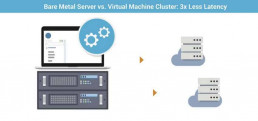
CenturyLink did an interesting performance test running Kubernetes for container creation.
Two clusters were created, one was based on a bare metal environment while the other was made up of virtual machines. They measured network latency and local CPU utilization. See the results for yourself:
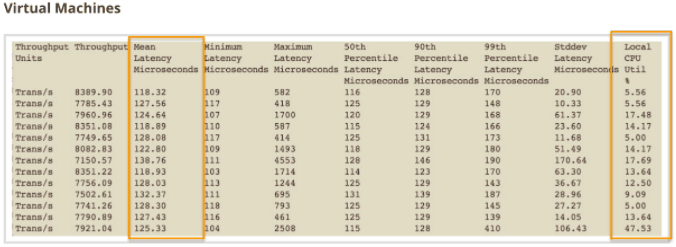
So what does this mean?
First of all, if you are running data-crunching apps which can significantly benefit from direct access to physical hardware, a bare metal server should be your first choice. It comes out as the winner with its lower latency and lower CPU utilization, consequently providing faster result times and more data output.
Can we say that bare metal is the best option out there? – No. This is just one performance analysis which emphasizes one specific use case. Cloud workloads can be moved around freely, are more flexible and scalable, tend to cost less, and are more easily maintained. But, they also tend to offer less performance and safety.
Conclusion
Ultimately, there is no right answer. Each option has its strengths and weaknesses, and it all comes down to what your organization needs. For many, finding middle ground might be the way to go.
For example, enterprises should seek out solutions that combine the strengths of both worlds and look into hybrid cloud environments, which bridge the gap between public and private cloud resources. This option is excellent if you have already invested in infrastructure and do not want to see that money wasted, but also want to make use of the cloud’s flexibility and scalability. In an in-house and outsourced hybrid cloud option, a part of your workload will be maintained on internal systems, while other computing workloads are outsourced to external cloud systems.
In conclusion, a single solution that works for everyone does not exist. If you are running an organization with diverse projects, consider a hybrid environment that combines bare metal and cloud hosting to maximize your ROI.
Recent Posts
5 Benefits Of a Carrier Neutral Data Center & Carrier Neutrality
There are many instances when having your business tied to a specific vendor is preferable.
Data centers that are tied to a specific carrier may seem attractive at first. But, the long-term implications can be less-than-ideal. There are several reasons to maintain your operations in a carrier-neutral data center, also referred to as a carrier hotel.
Carrier neutrality is an essential factor in choosing the right colocation provider.

1. Cost-Efficiency of Carrier Neutral Data Centers
Colocation data center providers provide a high level of control and scalability while reducing the need to re-engineer your applications for the cloud.
Adding carrier neutrality to this list expands your opportunities for cost savings. When there are multiple carriers represented in a single data facility, you can forge contracts with your top choice and have a backup negotiating point in your pocket as well.
The long-term nature of many data center colocation contracts means that it is essential to negotiate favorable terms and a way out if the carrier does not live up to expectations.
2. Reduced Risk of Data Loss
Protecting your data from catastrophic loss is one of the critical arguments for utilizing data center colocation.
Finding a solution that offers a carrier-neutral environment may provide even greater protection from business-critical data loss. The business cost of downtime goes far beyond direct expenses.
It extends to indirect costs such as loss of future sales from customers, poor terms with vendors on future contracts due to inability to fulfill obligations, etc.
Direct costs from a data loss can run into the tens of thousands of dollars quite quickly. Reducing the risk of data loss one of the more important critical issues around data colocation. A single outage is too much.
When you are in a facility that offers several carriers, you are that much more likely to find one that offers provides the service levels and guaranteed uptime that meets or exceeds your business requirements.
3. Improved Scalability Options
The flexibility to make quick changes in your facilities management strategy is a benefit for anyone using colocation facilities.
Working with a data center that offers a variety of service providers adds to that scalability as well. Today’s data-intensive services and processes require immediate access to information regardless of the time of day or night. These demands can shift dramatically based on customer demands and the flow of business, too. If your current carrier is not providing you with the scalability you need — either up or down — then a carrier-neutral facility allows you to select another service provider who better meets your business’s changing needs.
Adding new business lines or a new database structure would require significant infrastructure planning in the past. It can be as simple to roll out as clicking a few buttons on an interface or making a phone call to your colocation center in today’s world. This improved scalability and flexibility of data access can be a substantial competitive advantage in a fast-changing marketplace.
4. Local and Regional Redundancy
If something ever happened to your facility or your data carrier’s access to your facility, what would happen? Would your data immediately be lost for a period of time? Or, would you easily be able to swap to a different carrier?
With neutrality, your data stays safe and secure within the carrier hotel. It can also be rapidly transported via other carriers in the event of a catastrophic loss or failure. This is not a likely event. However, it does provide customers with the options needed to protect their significant investment in data and virtual infrastructure.
Having access to your data only a portion of the time is not an acceptable situation. Instead, you need to know that you can always maintain a clear path into and out of your data facility with your chosen carrier.

5. Overall Flexibility With A Carrier Neutral Data Center
Changing carriers in the event of an emergency is much more efficient when you have multiple options available. The flexibility of utilizing different carriers based on their physical distribution network is also a bonus.
You have options when it comes to everything from billing cycles and Service level agreements to acceptable use policies (AUPs). Additionally, neutral data centers are generally owned by third-parties instead of by a specific carrier which provides for greater resilience and access to data.
Working with a carrier neutral data center provides a variety of benefits to your organization. With reduced costs due to greater competition for improved redundancy and flexibility, these colocation providers are the best bet for a safe storage place for your business-critical information.
Recent Posts
What is Cloud Computing in Simple Terms? Definition & Examples
Did you know that the monthly cost of running a basic web application was about $150,000 in 2000?
Cloud computing has brought it down to less than $1000 a month.Read more
Hyperscale Data Center: Are You Ready For The Future?
Hyperscale data centers are inherently different.
A typical data center may support hundreds of physical servers and thousands of virtual machines. A hyperscale facility needs to support thousands of physical servers and millions of virtual machines.
Systems are optimized for data storage and speed to deliver the best software experience possible. The focus on hardware is substantially minimized. Thus, allowing for a more balanced investment in scalability.
This even refers to the security aspects of computing, as security options which are traditionally wired into the hardware are instead programmed into the software. Hyperscale computing boosts overall system flexibility and allows for a more agile environment.
Customers benefit by receiving higher computing power at a reduced cost. Systems can be deployed quickly and extended without a lot of difficulties.
What is a Hyperscale Data Center? A Definition
Hyperscale refers to systems or businesses that far outpace the competition. These businesses are known as the delivery mechanism behind much of the cloud-powered web, making up as much as 68% of the infrastructure services market.
These services include hosted and private cloud services, infrastructure as a service (IaaS) and platform as a service (PaaS) offerings as well. They operate large data centers, with each running hundreds of thousands of hyperscale servers.
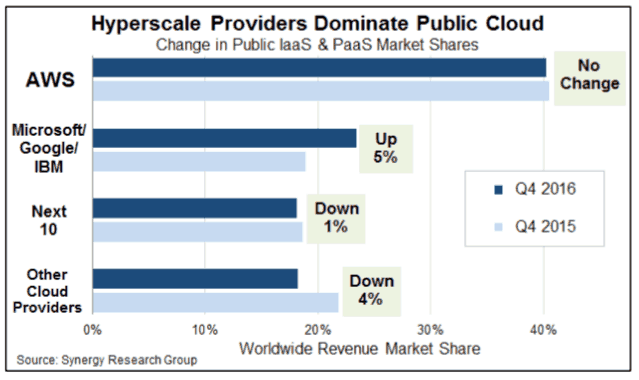
Nearly half of hyperscale data center operators are located inside the U.S.
The next largest hosting country is China with only 8 percent of the market. The remaining data centers are scattered throughout various regions throughout North America, the Middle East, Latin America, the Asian Pacific, Europe, and Africa.
Of the major players, Amazon’s AWS has claimed primary dominance, with Google Platform, IBM SoftLayer, and Microsoft Azure being fast followers. The sheer scale available to these organizations means that businesses increasingly will find value migrating their infrastructure to cloud platforms.
Data Center Requirements Continue to Expand
Who truly needs this much computing power?
It turns out, quite a few organizations either need it now or will require it shortly. The workloads of today’s data-intensive and highly interoperable systems are increasing astronomically. With this shift, the tsunami of Big Data coming into data warehouses is no longer cost-effective or feasible to host onsite or in smaller scale offsite platforms. The cost savings and scalability of moving in this direction are hard to ignore. Especially when users expect immediate results to their most intricate queries and business needs.
Anything slower than a millisecond response is considered unacceptable. This is especially true when you’re working with customers over the internet. Virtualization of servers can cause challenges with speed and often requires organizations to re-architect their legacy workloads to run in this more complex environment.

Benefits of Hyperscale Architectures
The highly attractive side of hyperscale architecture is the ability to scale up or down quickly.
This can be expensive and time-consuming using traditional computing resources. Spinning up servers virtually can be done in hours versus several days with a traditional on-premise solution. That’s only if you have all parts already available onsite.
Business continues to evolve making it even more essential to provide users with access to critical data access points. Hyperscale allows you to approach data, resource and service data quite differently than you could have done in the past.
Consider applications such as global e-retailers, where millions of operations are being made each second.
If someone in Indiana orders the last widget in that particular distribution center, the systems around the country have to adjust to find the next available widget. The substantial amounts of data required for these types of operations aren’t likely to be reduced over the years. The demand will continue to grow and expand as organizations see how leveraging these mass quantities of information provides them with a significant competitive advantage.

Challenges of Growth
On-premise relational database storage sizes have always outranked their cloud-based alternatives.
Many cloud databases still max out at 16TB. Plus, this modest size is one that couldn’t be scaled up directly from a 4TB database. The sheer volume of operations that must be handled all day, every day is staggering. Billions of operations across hundreds of thousands of virtual machines. Scaling network administrators to manage the standard failures alone would be an astronomical task. Much less, if there were any cybersecurity incursions into the site.
Finding physical space to house and then support these servers and determining the right KPIs to measure the health and security of the systems are other hurdles. The location requirements are quite specific and include exceptional access to a talented workforce. Security is also at the forefront, with modular or containerized designs prized for the benefits of mechanical and electrical power systems.
Answering customer requests for updates and questions alone is a staggering proposition when you are looking at this scale of activity. Enterprise customers have specific expectations around security, response times and speed. These all add complexity to the task at hand. Typical cloud computing providers are finding it challenging to stay abreast of the needs of enterprise-scale customers.
Why Choose a Hyperscale Data Center Provider?
Hyperscale is more rooted in hardware than software. The functionality available to computing customers is much more flexible and extensible.
Where previous cloud installations may be limited by the size of specific servers or portions of servers that are available, top hyperscale companies put a greater emphasis on efficient performance to deliver to customer demands.
Form factors are all designed to work together effectively through both vertical and horizontal scaling to add machines as well as extend the power of machines already in service.
Recent Posts
Data Center Colocation Providers: 9 Critical Factors to Look For
Finding the right data center can be one of the best investments your organization ever makes.
Take the time to make the right choice for your business’ unique needs, and the returns will be immediate.
You’ll find this easy to do once you appreciate what a colocation data center is and which services matter for your company.
What Is Colocation?
Colocation is a popular alternative to traditional hosting.
With a traditional hosting setup, the service provider owns just about every component required to support your applications. This includes the software, hardware, and any other necessary elements of the infrastructure.
Conversely, colocation server hosting offers its clients with the physical structure these companies need for their hosting solutions.
The name “colocation” refers to the fact that many companies’ servers are “co-located” in the same building.
This is also referred to as a “multitenant” solution.
Each client is responsible for providing dedicated servers, routers, and any other hardware. Often, the colocation server provider will take a “hands-off” approach. This means the client’s employees need to physically travel to the data center if server maintenance or repairs are required.
This isn’t always the case, though. As we’ll cover in more detail below, many data centers offer many managed services.

What Is a Colocation Data Center?
A colocation data center is the facility that houses servers and other hardware on behalf of their clients. Inside data centers, racks of servers store data for the company’s clients.
One way to better comprehend onsite hosting and data centers is as two different types of homes.
Onsite hosting is like a house. You own everything to do with that property, and you’re responsible for its “operation” and maintenance costs.
A colocation facility is more like an apartment. You still have to pay certain fees. You still need to pay for most of what goes into an apartment, too. However, the owner is responsible for maintaining the property itself. This includes the physical structure that protects your investment.
Both have their advantages. Data center facilities are growing in popularity in the United States and Worldwide.
Some of the reasons for this are:
- Lower operating costs – For the vast majority of companies, it makes much more financial sense to outsource hosting. The costs of maintaining everything from servers to the power feeds just aren’t realistic. The same goes for the budget it would take for the space required. Then there’s the overhead related to security. Besides, not only do service providers keep these costs down, they usually do a better job, too. When you consider the decreased chance of downtime, savings go up even more.
- The need for fewer IT staff members – Another cost you’ll need to consider with onsite hosting is the need for a large IT team. After all, if anything happens to your servers, your company will be in big trouble. Most data centers have experts on staff who can be leveraged during an emergency. Many also have managed services, so you can hire the daily IT help you need at a fraction of the cost.
- Unparalleled Reliability – Again, downtime is expensive. Companies that rely solely on onsite hosting are vulnerable to any number of events. Anything from an earthquake to a busted water main could take them offline. Data centers are designed with disaster recovery in mind. Most have multiple data center locations, including outside of the United States, too, ensuring redundancy.
- Predictable Costs – As long as you read the fine print (more on this below), colocation providers will make forecasting easy. You know precisely what you must spend every month to keep your company online – no surprises.
- Ease of Scalability – Colocation services are incredibly scalable. Pay for what you need, and don’t bother with what you don’t. As the related costs are predictable, it’s easy to decide how much scaling your company can afford to do, too. Once you’ve completed the data center migration process, scalability is relatively easy. This gives your company the ability to scale up or down as necessary whenever you want.

9 Tips For Picking the Best Colocation Data Center
Now, you’ve got a better comprehension of what colocation solutions are and why they’re so popular – you must be excited to choose one.
Before you do, though, be sure to read through the following tips to ensure best results.
1. Be Clear About Your Company’s Unique Goals
No two companies are the same.
Therefore, even when two companies want the same thing – like colocation services – they may still have different needs.
That’s why it’s important to go over your company’s goals and objectives before considering colocation server hosting.
Otherwise, it will be all too easy to spend more than you need to, including on services you’ll never even use. You may also neglect specific requirements, only to realize your mistake after you’ve signed a contract and gone through migration.
If your company has been hosting onsite up to this point, this shouldn’t be too difficult to do. Look at what’s working and plan to scale up if necessary. Then, look at what services you need, and find colocation providers that can offer them.
If your company is brand new, this will be a little more difficult. Consider hiring a consultant or speaking to those at various data center facilities to realize what you need.
Either way, you may also need a facility that offers managed services. That would allow you to outsource many essential tasks to the experts at these facilities.
2. Ensure Data Center Infrastructure Supports Your Assets
On the other hand, there’s one advantage to building your infrastructure from scratch. You will most likely be more open to the technology you’ll use. In turn, this means you can consider more colocation facilities.
For those of you who are set on certain types of hardware and software, you must keep this in mind. Presumably, you chose both because it supports your organization’s goals and objectives. Therefore, some data centers won’t be options.
You must also confirm that a facility can support your power-density needs. Many companies need upwards of 10 kW for each of their cabinets. Older ones may not be able to meet these requirements. Others will, yet doing so will come at an increased cost.
Choosing a data center that can’t provide customer support to necessary assets would be a costly mistake. When you speak to a provider, list what your needs are upfront. There’s no point in proceeding if a data center facility can’t meet this essential requirement.
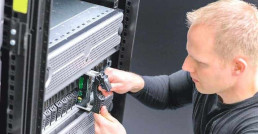
3. Remember: Location, Location, Location
Many data centers with more than one location provide disaster recovery as a service.
However, you most likely want one of those locations to be nearby your business. This is wise even if you plan on using the colocation facility as a secondary site. That way, your IT staff will be able to access it with ease.
Unless you plan on outsourcing all of your needs with managed services, this is essential.
4. Don’t Take the Advantages for Granted
While the benefits as mentioned earlier are extremely advantageous, not every data center may offer them to the same degree.
For example, many data centers allow themselves a certain number of outages every year. Before going beyond that point, they’re within their contract even if your company suffers as a result.
There are ways around that problem. A simplified example would be a business continuity plan that involves another colocation provider outside of the United States. That way, if a disaster causes an outage here, your other colocation service should be safe.
Still, take the time to go through the data center colocation agreement fine print. If you have questions about anything, put them in writing and make sure you document the answers the same way.
5. Go Through the Colocation Costs Carefully
Similarly, you’ll only benefit from predictable costs if you go through them with a fine-tooth comb. For example, you may need to pay an initial fee to set up your data center space. Another may do the same, only amortize the cost over a certain number of months.
This can make comparisons between colocation facilities misleading if you’re not careful.
For most companies, the best way to look at costs is to project how much your need for hardware will grow in the coming years. The hardware you utilize will dictate the power, space, and connectivity you need, too.
All of these factors affect the price you’ll pay.
Consider any colocation services you may eventually need the same way. These will also affect your budget going forward.
Concerns about your colocation costs and pricing should be part of your search criteria. You don’t want to choose a colo data center facility only to find out they won’t adjust their contracts.

6. Find Out What Your Migration Timeline Will Be
Although this may not necessarily amount to a deal-breaker, you should ask about how long migration will take. That’s because one factor tends to catch companies off guard.
As soon as migration begins, most colocation providers can meet extremely tight deadlines. This includes for putting your service cabinets in place, energizing your power strips, and equipping your team with security clearances.
Usually, all of this can be achieved within a month – possibly sooner depending on your needs.
However, the activation of a carrier circuit can easily take much longer. Your timeline extends to at least 90 days before connectivity is achieved. Unfortunately, until you have carrier connectivity, your migration cannot be completed, and your organization will be without its servers.
Again, if you can plan for the timeline involved, you don’t need to disqualify datacenters with longer ones.
One way to do this is to have a provider guarantee a migration date in your contract. If they’re helping, have them define each step of the migration process, too, with a date for each. No matter what, you need them to do this for security clearance, over which they have complete control.
7. Look for Facilities with Carrier Neutrality
Many colocation centers are corporation-owned. This usually means they have a limited offering when it comes to network carriers that offer colocation services.
Give priority to carrier-neutral data center facilities. They can offer you a much larger variety of carriers and options for connectivity, and this will mean competitive pricing. You will also be able to leverage the design of a redundant vendor network.

8. Don’t Assume More Floor Space Is Better
There’s nothing wrong with a data center that has an impressive amount of floor space.
Just know that, in and of itself, that trait isn’t incredibly important. It shouldn’t be seen as much of an advantage on its own.
Preferably, you want to fit as much equipment as possible in as little space as you can. By doing so, you’ll enjoy much better operating costs.
9. Make Sure Your Investment Will Be Safe
We’ve already mentioned the importance of picking a colocation facility that will meet your organizations disaster-recovery needs. Otherwise, your company could be without its servers for a prolonged period of time. That would be a highly expensive problem.
You need to consider the security of a data center for the same reason. As a multi-tenant facility, people from other companies will have access to it, as well.
That’s why you want to choose a location with multiple levels of physical security. These should exist both inside and outside the building. If you deem it necessary, you can also ask about adding cameras to your data center space for extra security.
Taking Your Time Choosing a Data Center Colocation Provider
Choosing a data center is one of the most important decisions you’ll make for the future of your business. So, while you may be anxious to begin leveraging its benefits, don’t rush.
Review the nine tips outlined above and consider as many options as possible.
Only after you have found the perfect choice should you proceed. Then, it’s just a matter of time before the perfect data center helps your company reach new heights.
Recent Posts
Managed Server Hosting vs Unmanaged: Make An Informed Choice
Your business relies on servers to keep your website, e-commerce, email, and other vital functions performing at peak condition.
Choosing the right server solution can make a difference in your web hosting experience.
Companies have two primary options for dedicated hosting: managed and unmanaged.
Understanding the differences and advantages between the two types helps companies make an informed choice.
What Is A Managed Server? A Definition
When you choose managed services, you gain technical expertise. Managed server hosting companies will install and manage software, troubleshoot issues, and provide a control panel for you to handle basic tasks.
With a managed server, the provider will configure the server for you and make sure that the right software is installed. The company will complete the necessary maintenance work.
One significant benefit of a managed dedicated server is support. When something isn’t working correctly with your server, it’s up to the vendor to fix the problem.
What is Unmanaged Server Hosting?
The most important difference with an unmanaged server is that you are responsible for the management, server health maintenance, performance, and upgrades. Generally, managed servers are best for companies that have their own information technology departments.
A web hosting company may still set up the server for you, but after that, it’s up to you and your team to ensure it remains functional. If you and your team have the right skills, an unmanaged solution may make sense.
In an unmanaged hosting situation, you will still have a web host. But the initial setup may be the most significant component of the services provided. Contractually, the web host will be responsible for the physical hardware and making sure that your site and company are connected to the internet.
That means that when components fail, servers need to be rebooted, networks need to be maintained, or weird error messages appear on your site, you are responsible for fixing them. Software installs and upgrades and security patches are your responsibility.
In some cases, hosting accounts can be used to address these issues when they arise, but the costs will be expensive when accessed on an ad hoc basis.

Advantages Of Managed Servers
Companies considering their hosting solution should discuss the benefits of dedicated server options. For managed solutions, the primary consideration is support.
Managed servers provide a cost-effective way to ensure operational uptime for your company and its critical functions. The provider owns the hardware, and it is leased to the client.
When there’s an issue, the provider will diagnose and resolve the issue.
Here are a few of the core benefits to managed servers:
Initial Setup
Your provider will configure the hardware and install the proper operating systems and software. Proper server configuration ensures that your applications run effectively and securely.
Support
One of the main advantages is the day to day support you receive. The team is available to respond to issues in your moment of need. Look for a provider with 24x7x365 availability.
Back-Up and Storage
You need access to data on your server, and the managed service provider ensures it’s available. Data loss can be devastating for any business, and proper redundancies ensure that information is backed up and stored securely.
Disaster Recovery
In the unlikely case of an attack or natural disaster, your service provider will have your systems up and running with minimal downtime. Often, managed server solutions rely on data centers in multiple locations with continual data backup functions to keep information secure and safe. Having the right hosting provider ensures continuity of service and customer retention
Server Monitoring
Monitoring of servers using tools or software is critical to any hosted web services, ensuring that communication, data, and access are fully functional at all times. Managed services provide continual monitoring to look for irregularities and can act on those issues before they become a significant problem.
Security
Whether it’s a system infiltration attack or a distributed denial of service (DDoS) attack, your company needs a solution that is up to date and monitoring access and activity. Having DDoS prevention can save money and provide peace of mind.
Upgrades
When there are software updates or security patches that need to be installed, your service provider will ensure they are deployed to your dedicated servers.
Flexibility
Having the right service provider allows your organization to secure the level of dedicated hosting to meet your evolving needs. As demand scales up or down due to expansion or seasonal differences, your server can adjust accordingly. When you need additional resources, your host provider can scale accordingly.

IT Cost Savings
One key component of having managed dedicated servers is the ability to save on IT costs.
Consider the costs of recruiting, hiring, training, and supporting a full team of technology professionals. You’ll need to factor in salaries and benefits, including the need to have potentially three shifts of employees available to monitor and maintain your servers.
With an outsourced IT team and managed dedicated servers, businesses can reduce your personnel costs considerably. Managed hosting provides a cost-effective way to deliver high performance without extensive investment in personnel and related expenses.
If you have a smaller IT team, you can rely on a hosting solution to reduce the burden.
Control When You Need It
With managed hosting, you also have access to an administration console. These tools allow you to control key areas of your website or applications, such as adding and deleting users, adding new email addresses, and other essential functions.
These web-based interfaces give you the ability to manage content, access, and functionality. For daily management of your site, including blogs, e-commerce, content management, and the forward facing components of your business, having these tools available is critical.
These administrative functions are a common component of most managed providers core services.

When Do I Need Managed Server Hosting?
Unmanaged hosting may appear to be a less expensive option, free of the need to engage in contracts for support.
Consider the following situations and whether the provider has the skills and resources to handle these issues:
- The server needs to be rebooted.
- Customers cannot access the site.
- Hackers are trying to gain access to your server.
- Your server is unable to withstand the volume of traffic, slowing down or performing poorly.
- Your software needs to be patched or updated.
- Your data is corrupted and unusable.
- A flood, fire, or hurricane affects the physical location of your server, making it difficult or impossible to access or use.
These are situations when having a hosting solution is the optimal choice. Whether it’s an operating system error or a software upgrade, you want to have a reliable team available. A dedicated server managed by a professional team of experts can bring their experience to bear on your issues and get them resolved quickly.
Here are some of the situations when having a managed web hosting solution makes the most sense.
- Previously shared space. If your company had previously used a public cloud or other shared server space, but needs its own hardware, managed hosting makes sense.
- Server reliance. Any business that relies on hosting ecommerce, websites, or public access to data and information should consider a single tenant structure.
- Small or no IT staff. Companies with limited internal IT staffs or smaller teams should consider a managed solution. With an external organization to adequately manage your server and fanatical support, your company can leverage the extended support capabilities.

Questions to Consider With Dedicated Server Hosting
Which solution is the right choice for your needs? That decision largely depends on the answers to the following questions:
- How much technical expertise is available at my company to maintain servers, networks, infrastructure, and hardware?
- How critical is it that websites, email, and applications are available all day, week, and year? What are the consequences of downtime?
- What administrative controls do I need for the website, email, and access?
- Can I back up and protect my data in the case of a cyber attack or natural disaster?
Choosing the right server solution can have a transformative impact on your business.
With the proper support and security, your organization can confidently pursue revenue-generating work, focus on customer service and acquisition, and deliver quality products and services.
Contact us for a custom quote. We are standing by to customize your hosting experience.
Do You Have the Best Server for Your Business?
Contact phoenixNAP today.
Recent Posts
Windows Server vs Linux: The Ultimate Comparison
In choosing a server operating system, Windows comes with many features you pay for. Linux is open source and puts users in the driver’s seat for free.
Let’s consider the server as the software to handle the tasks of the hardware. The hardware can range from a single host-computer connected to an internal network, to a high-tech array of external hardware services on the cloud.
Which system you use—Windows vs. Linux—to power your server, depends on your business needs, your IT expertise, and the software you want to load. It could also determine the type of provider you want to work with.

Advantages of Windows Server OS
The Windows server package, professionally designed by Microsoft to make a profit, has some compelling advantages. Pay for your service and receive better support than open-sourced Linux, which is more or less community developed and supported. Windows customer support, as expected is through Microsoft and their resellers.
Your Windows applications (Outlook, Office, etc.) will integrate with Windows servers straight away. If you use Windows software and services, it makes sense to run them on a native platform.
If you are running a database backend based on Microsoft SQL, it will not run on a Linux server, unless you install a Windows emulator. To do this, you must purchase a copy of Windows and the database software separately.
Windows server is often considered a complete solution that is quick and easy setup. If you want remote desktop access with an intuitive graphical user interface, Windows offers this without command-line programming which is required by Linux.
Does your business require scripting frameworks like ASP and ASP.Net? An ASP, or Active Server Page, is a web page that includes small embedded programs—i.e., scripts. The scripts and web pages you develop from those programs will run only on a Windows server. The Microsoft server processes these scripts before the page loads for a user. This is not possible with Linux.

Benefits of Linux servers over Windows
Linux is an open-source operating system (OS) and IT infrastructure platform allowing distributions such as Ubuntu, Fedora, and CentOS. Its source code is available for coders to change and update the way the software functions. Users can go to the source to edit features or fix bugs.
Linux, because it is open-source, is free. The web host only needs to pay for technical support to install and maintain the program (if required). Business Server providers do not need to pass along additional costs to the customer. On the other hand, with Windows servers, the company typically must pay for the operating system and a periodic use license.
Linux has instant compatibility with other open-source software products and provides a quick interface with seamless adoption. Linux users can run Windows programs, but they must buy interface software and pay for Windows licensing. That comes in handy when you have legacy applications that must run on a Windows emulator.
Linux servers and the applications they run generally use fewer computer resources as they are designed to run lean. A bonus is that programmers can modify Linux servers and software “on the fly” and without rebooting, something that is not possible in a Windows environment. Microsoft Windows servers tend to slow down under multi-database tasking, with a higher risk of crashing.
Linux is more secure than Windows.
While no system is immune to hacking and malware attacks, Linux tends to be a low-profile target. Because Windows runs the majority of the software in the world, hackers head for the low-hanging fruit—Windows.
Windows vs Linux Server: Head to Head
Now that we have given equal time to both Windows and Linux, let’s make three final head-to head-comparisons:
1. The learning curve to install and manage a Linux server is steep. Windows users don’t need to be a programming expert to customize the server.
2. Linux is a better choice for web developers who can configure an open-source Apache or NGINX server. Likewise, developers working with a MySQL database know that Perl, PHY, or Python development tools are long-time favorites, with broader online community support.
3. A Windows server package includes technical support, along with regular system upgrades and security fixes. Linux technology has proceeded at a slower rate of change. It is a trimmed down system. You don’t have to upgrade for features you may not need continually. You can add those features to Linux yourself.

Linux & Windows Server Costs
On a Windows configuration, expect to pay more to get the exact features you need. For example, a managed Sharepoint site or an Exchange server can take you beyond the features offered by the average Windows-based servers. Ask whether they are available and see if you can get help in configuring them.
Again, be aware that your existing database software will only work on a MySQL server. Also, if remote computing is in your future, you also need to ask about remote desktop access.
If you are in the Linux camp, you’ll need a host that eases your access to common Linux tools such as PHP and MySQL. Look for advanced features, like the ability to use time-scheduling jobs.
Making the Server OS Decision
When you make your decision to either go with Windows or Linux, you will want to find a reliable and experienced provider to help with installation. Consider the following factors in your final decision:
- Do you need 24-hour, quick response support, and is your eCommerce site mission critical? Windows support comes with the product. Linux responses might not be so fast.
- Can you get by with shared hosting solutions or do you need the benefits of a dedicated server? The latter is more expensive, yet more secure. The former is cheaper, yet less secure; you share bandwidth and resources with other customers on the host’s system.
- What are your plans for future growth? Automatic scaling to allow your secure data storage and bandwidth to grow as your business grows is something that needs to be part of the service.
- What is your level of interest in cloud computing? Is it important to go all in, or go for a hybrid solution to keep your data closer?
Summary: Linux Server vs Windows Server Comparison
Deciding between Windows and Linux requires an understanding of the pro’s and con’s of each system, as well as how they fit into your hosting needs.
You can work across platforms with Windows and Linux. Be aware that the convenience comes at a cost. You must pay for the software and application licenses if you need to run Windows on Linux.
If you choose Windows, and you get a simple installation and configuration, as well as excellent support. If you go with Linux, you are working with an open-source OS with a community support network—without the higher costs.
Once you have decided between Windows and Linux, look for a provider who can accommodate your needs, based on your companies business model and needs.

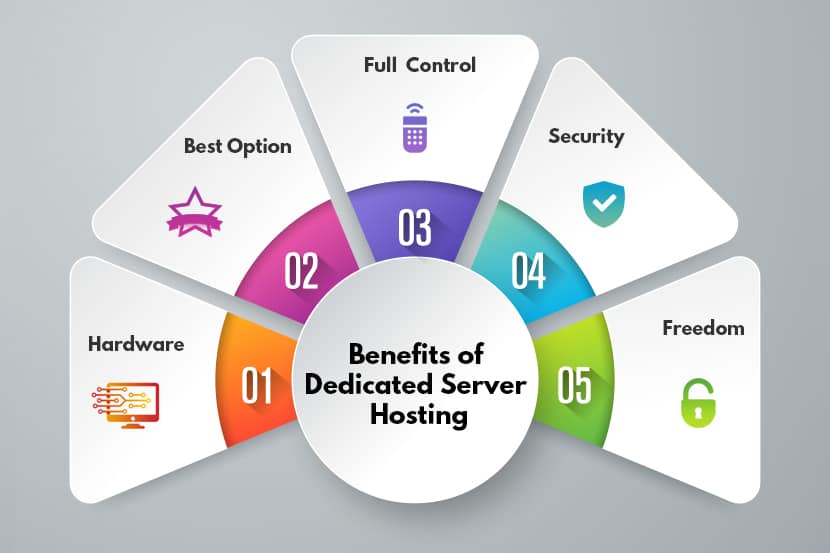
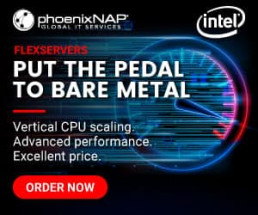

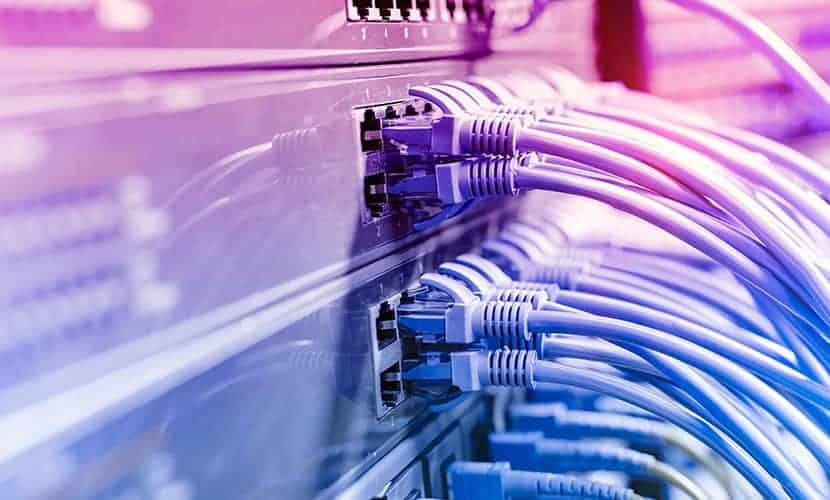
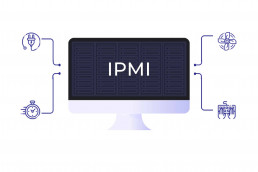
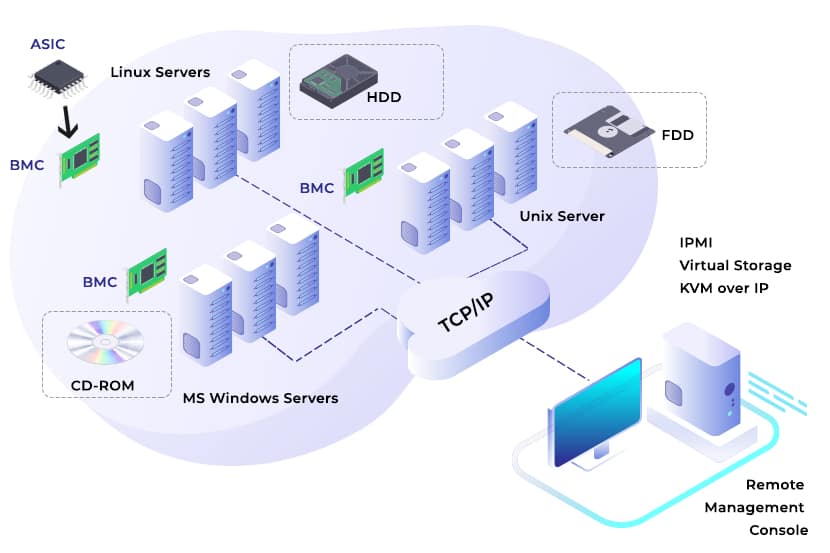

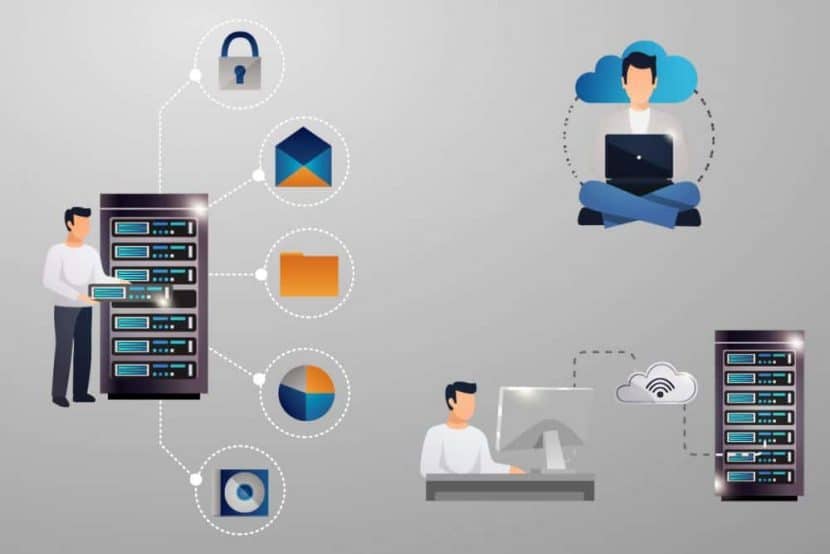
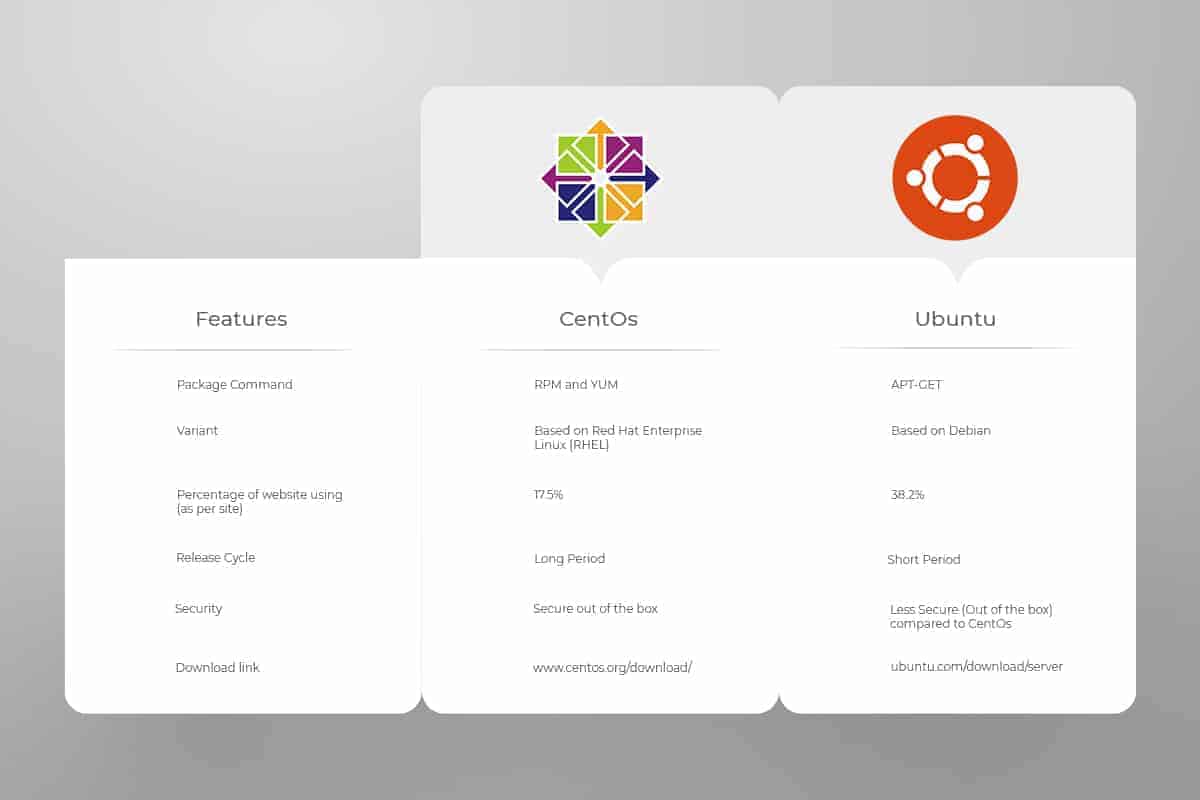

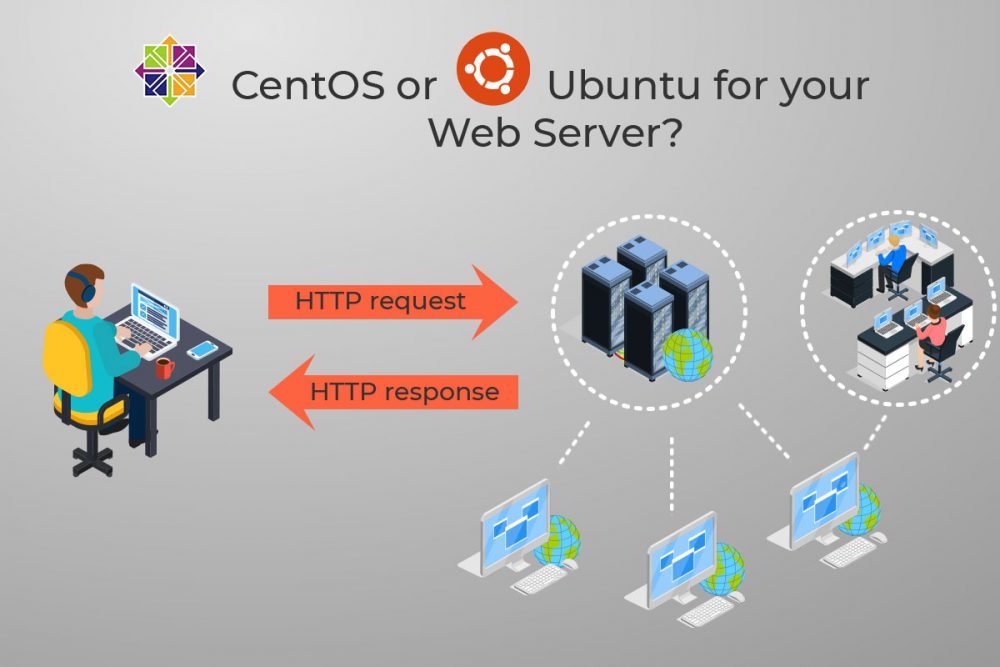

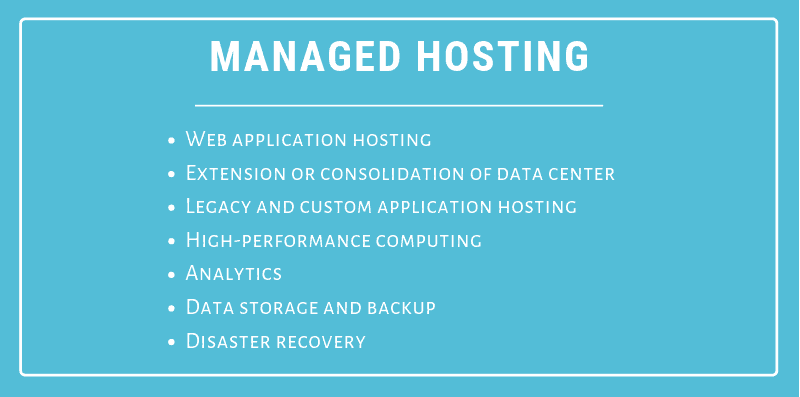


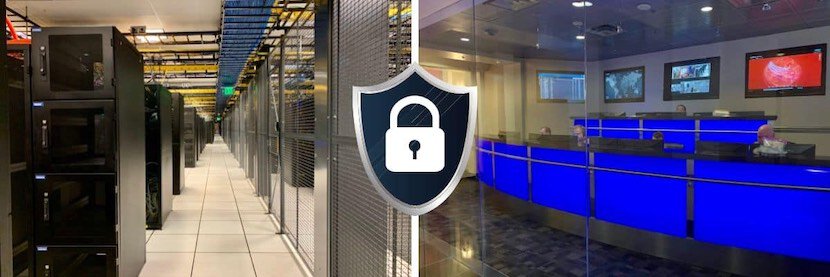


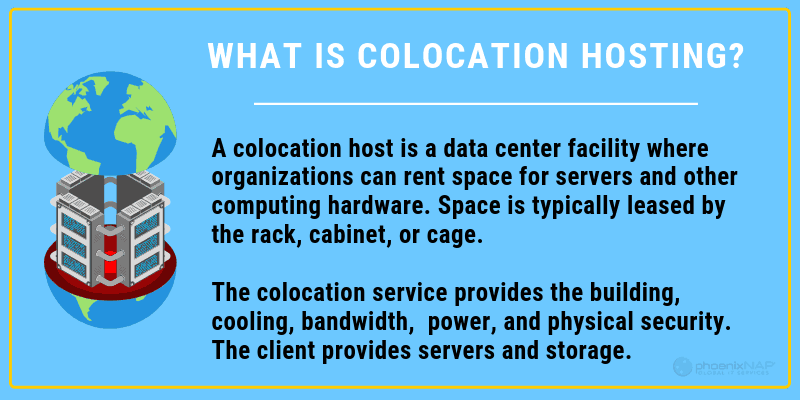
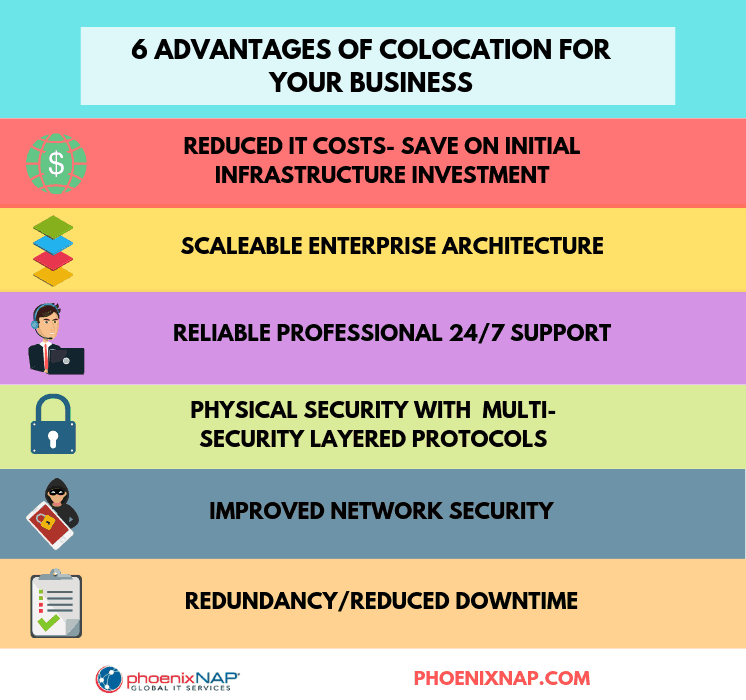 Benefits of Colocation Hosting
Benefits of Colocation Hosting

